An old saying goes: “All mushrooms are edible, but some are edible only once”. But, joking aside – there are thousands of different types of mushrooms, but only a small number of them are considered edible. Let’s take a look at the different types of edible mushrooms.
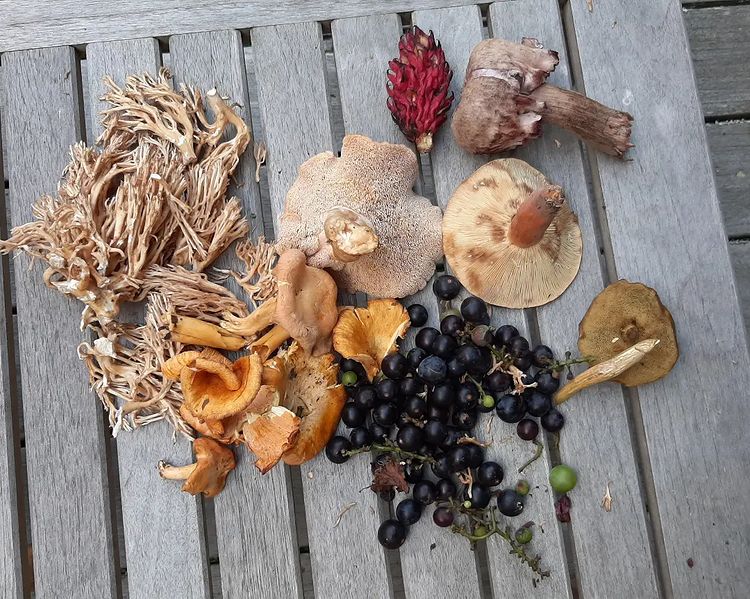
It is difficult to find a type of food that can be prepared in so many different ways, that tastes so good, and at the same time has such a high nutritional value as mushrooms.
Mushrooms give soups, stews, sauces, risotto, omelets, and other dishes a rich, almost meaty taste and, in general, can intensify the flavors of dishes. These properties are mainly attributed to the high content of free amino acids, including glutamic acid, which makes mushrooms a concentrated source of monosodium glutamate – a well-known flavor enhancer.
From a nutritional point of view, mushrooms are known for their high protein content, especially compared to other plants, which is why they are also called the meat of the plant world.
However, listing all the nutritional benefits mushrooms bring to the table would require a whole new article, so we’ll have to cut it short and go straight to the point.
We’ve prepared a list of more than 40 types of edible mushrooms that’ll hopefully make you appreciate mushrooms, if you’re not already, and maybe give you an idea of what to cook next time you feel hungry.
1. Oyster Mushrooms (Pleurotus Ostreatus)
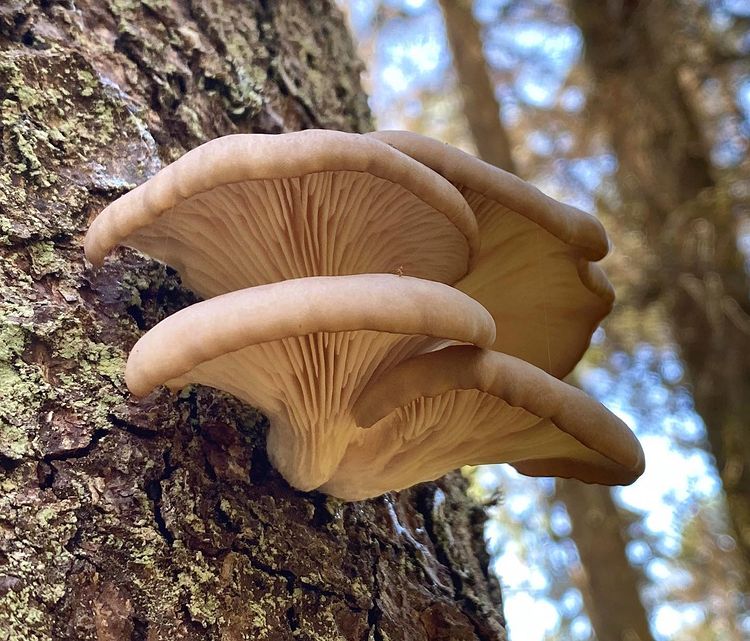
Oyster mushrooms are one of the most popular mushrooms, valued as tasty and healthy food. Throughout the year, it is possible to find them on stumps and fallen trunks of deciduous trees (beech, birch, poplar, oak, hornbeam, etc.).
Oyster mushroom, also known as abalone mushroom, contains all essential amnionic acids, except tryptophan, vitamins such as vitamin B1, B2, B5, B6, B7, vitamin P, and many minerals. In addition to protein, it also contains a large percentage of carbohydrates and only about 4% fat.
The pleasant taste of oyster mushrooms is commonly described as earthy and buttery, with hints of anise or flour. Its white flesh is rigid and woody.
2. Button Mushrooms (Agaricus Bisporus)
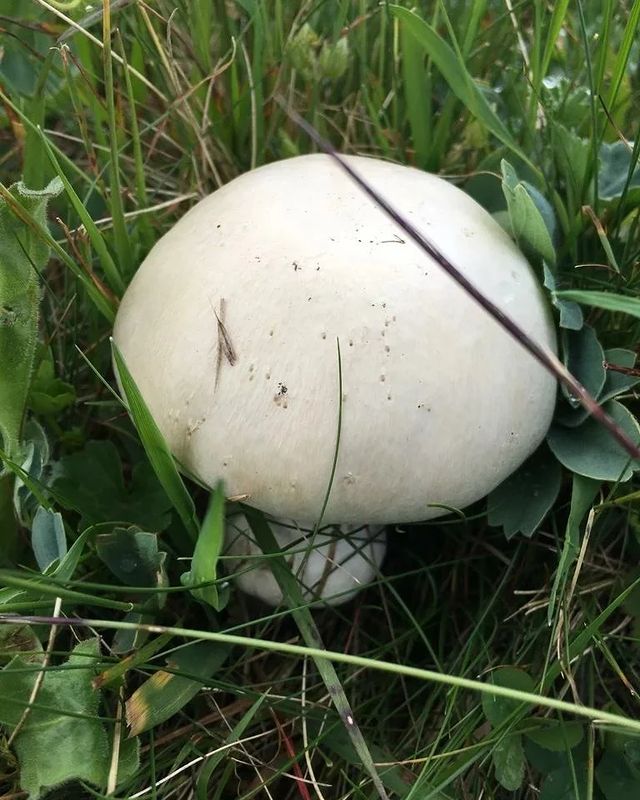
Button mushrooms are mass cultivated almost everywhere around the world and are one of the most, if not the most popular, edible mushrooms.
In nature, they grow intensively from May to October and can be found in the forests, meadows, and pastures, mainly after rain.
Button mushroom has a semi-round white cap, while its flesh is firm and smells pleasant. In addition, it has a brothy and mild flavor, which is why they can be added to many different dishes and prepared in many ways.
Related: Mushrooms In Houseplants? This is Why They Are A Good Sign
3. Cremini Mushrooms (Agaricus Bisporus)
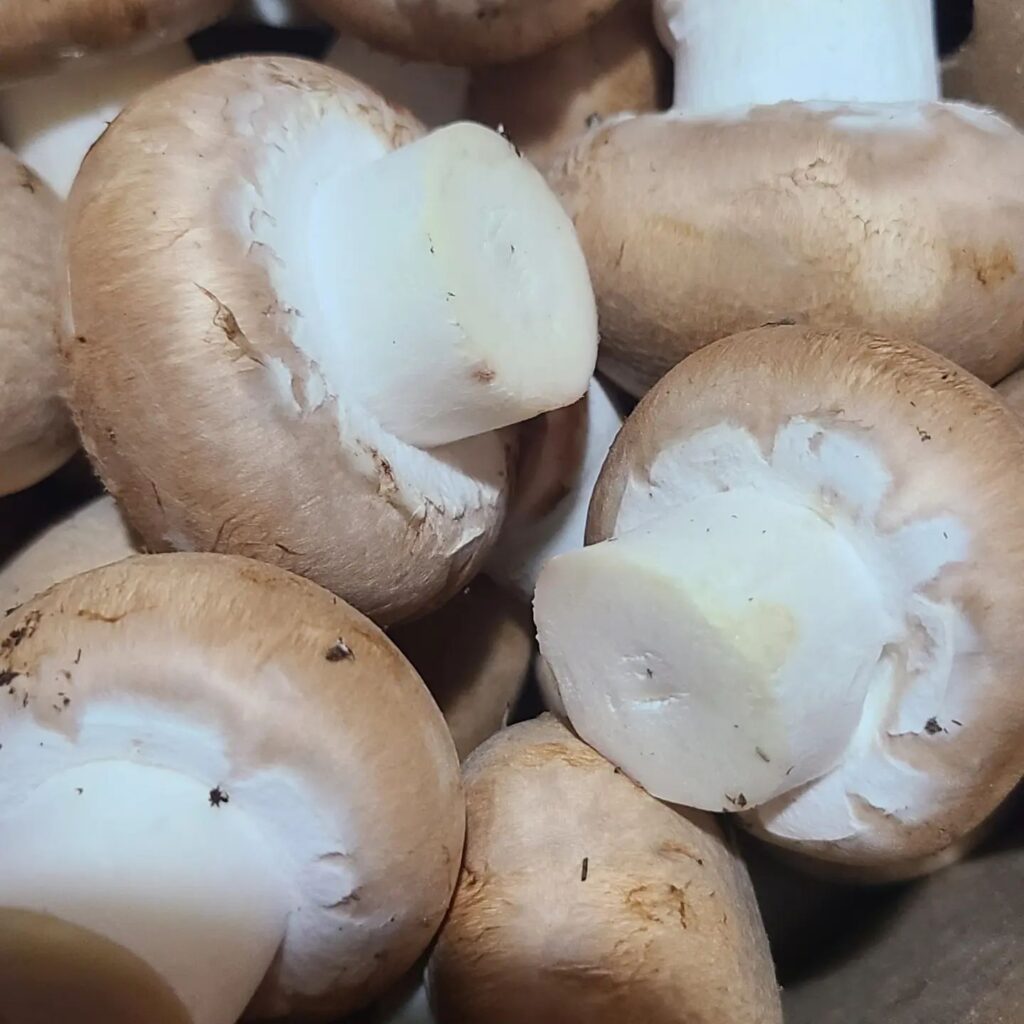
If you’ve been reading carefully, you will have noticed that the cremini mushroom species has the same scientific name as the previous one, button mushrooms. That’s because they are the same mushroom species!
So what’s the difference?
There are two differences: the color of the cap and age. Button mushrooms are just Agaricus bisporus with a white cap harvested slightly earlier. Originally these mushrooms (Agaricus bisporus) were only brown, but thanks to a mutation, they changed color, and that’s how he got button mushrooms.
Cremini mushrooms, which are sometimes incorrectly written as crimini mushrooms, are the original Agaricus bisporus and are also harvested at a later point than button mushrooms.
4. Portobello Mushrooms (Agaricus Bisporus)
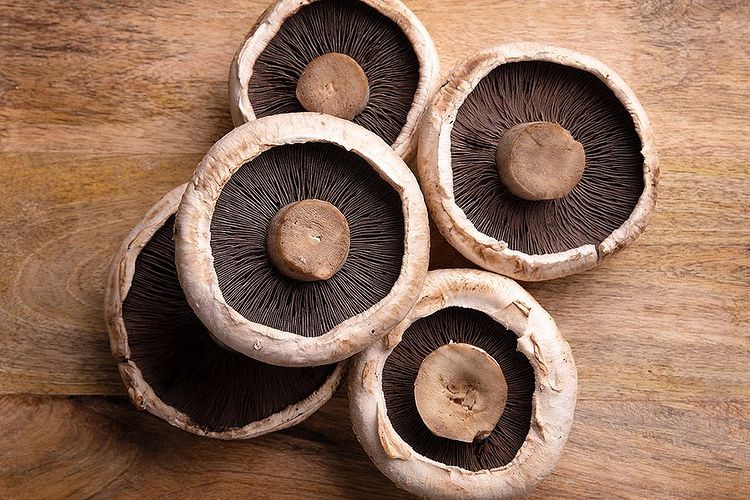
The last Agaricus bisporus variety we’ll discuss is Portobello mushrooms, which are just an adult version of the two previously mentioned species.
Portobello mushrooms have a round brown cap, and they’re bigger since they grow to around six inches across, while the other two are no longer than three inches.
5. Black Trumpet Mushrooms (Craterullus Cornocopioides)
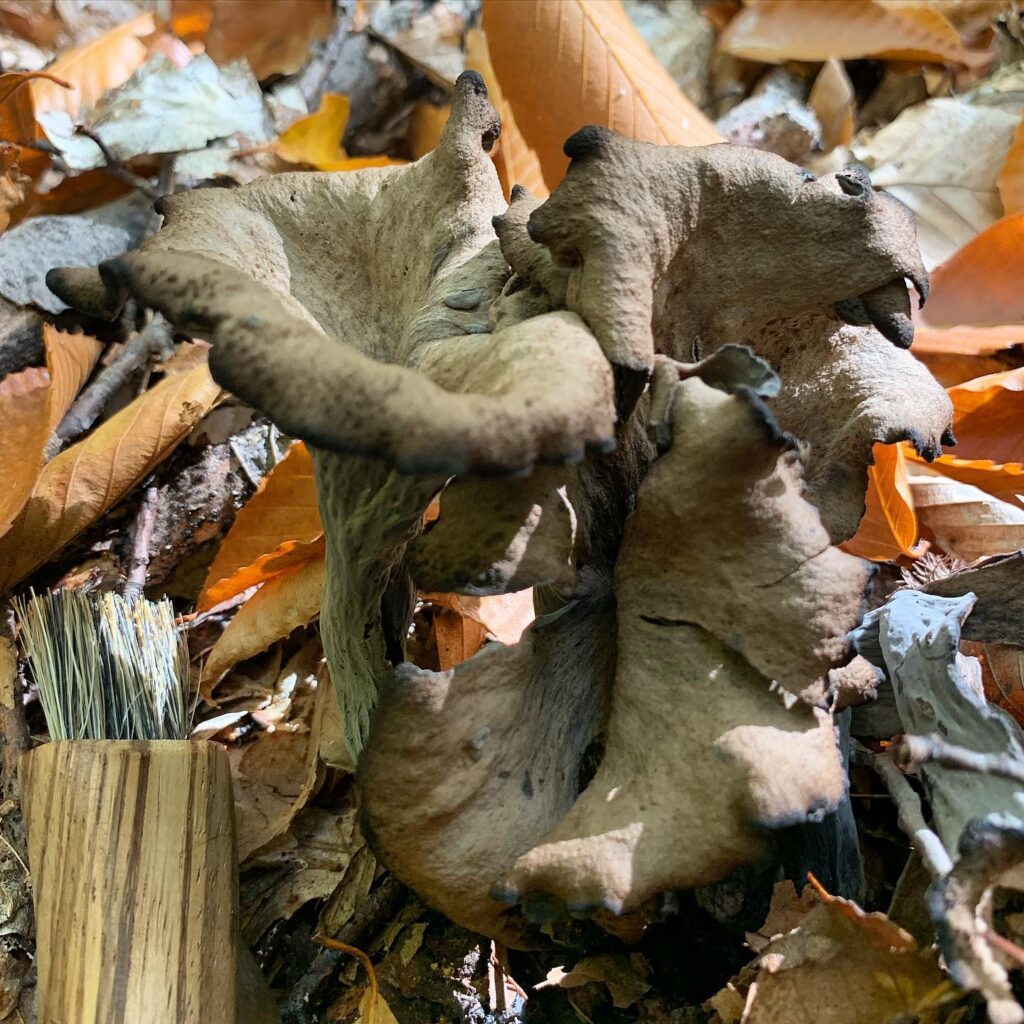
The black trumpet mushroom is an extremely funnel-shaped and completely hollow in the middle to the bottom type of wild mushroom with a dark brown, sometimes almost black color. Because of its dark color, it is difficult to notice it on the forest floor. However, precisely this quality makes it hard to be confused with poisonous mushrooms.
The taste and smell are very aromatic and fruity. Stiff meat is gray to black, thin, and elastic.
6. Enoki Mushrooms (Flammulina Velutipes)
Enoki or enokitake are cultivated mushrooms of the Flammulina velutipes species, which are famous worldwide, especially in East Asia. This variety is grown in dark places, and because of the absence of light, it develops very elongated pods, small caps, and a white to pale yellowish color.
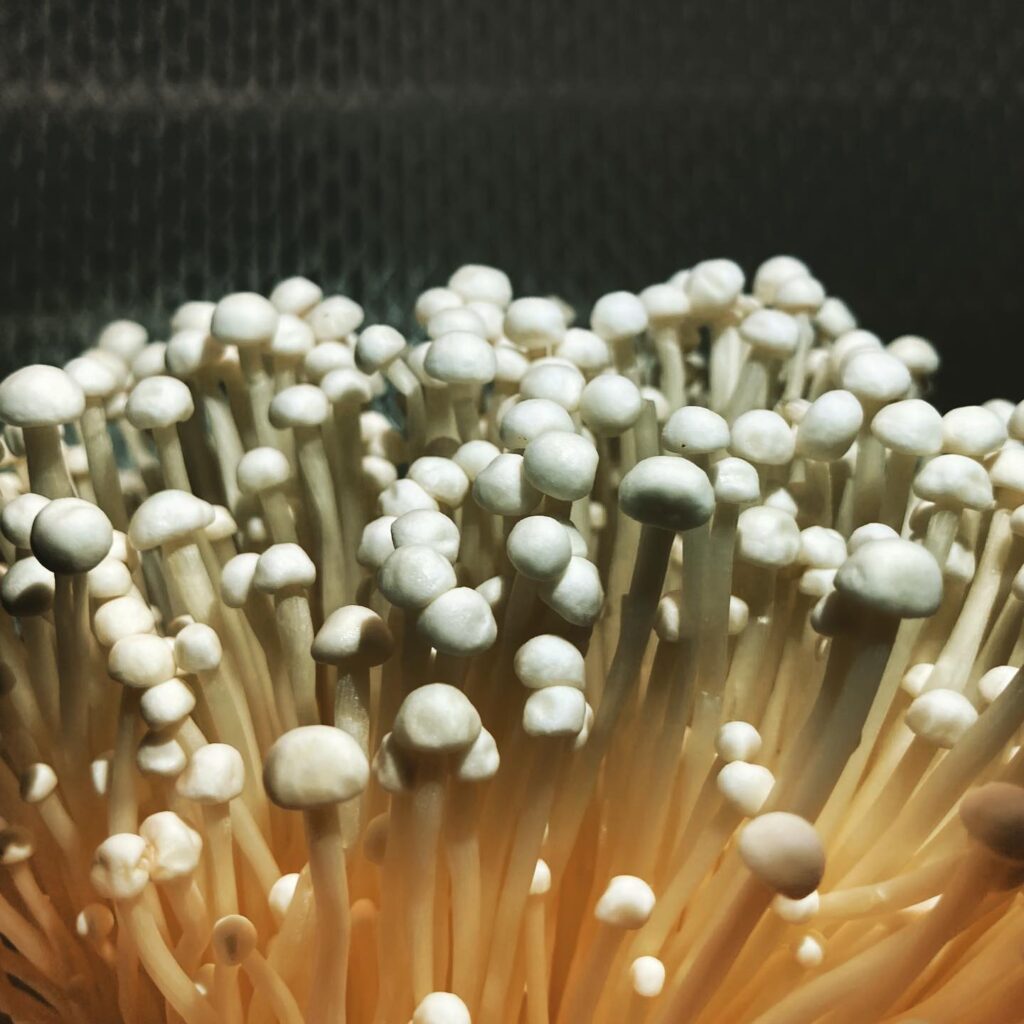
Enoki mushrooms are one of the rare types of mushrooms that nature offers as edible in the winter. Another interesting thing about this species is that it is the first type of mushroom to leave Earth’s orbit.
In 1993, scientists wanted to prove that fungi can grow in an environment devoid of gravity, so they launched a piece of wood with spores of this species on the Space Shuttle Columbia. Since there was no solid ground on which to fall, the mushroom spores grew in all directions.
Enoki, or golden needle mushroom, its other popular name, is grown for its edible cap, which unfortunately doesn’t contain much of the delicious meat.
7. Gypsy Mushrooms (Cortinarius Caperatus)
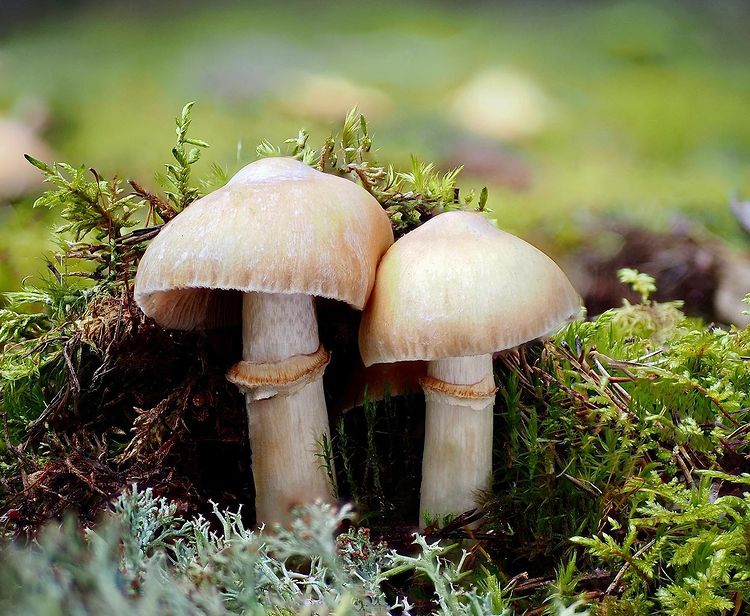
Gypsy mushrooms are widespread in Europe, Asia, and North America. Their habitat is sandy soil, primarily coniferous, less often deciduous and mixed forests. They usually grow in large groups during summer and autumn.
Gypsy mushroom is used in so many ways that it is difficult to single out the best preparation method. Stir fries, soups, sauces, stew – you name it. It is also excellent baked, pickled, or preserved in oil.
Related: How To Get Rid Of Mushrooms In Lawn | Are Mushrooms Harmful To Grass?
8. Maitake Mushrooms (Grifola Frondosa)
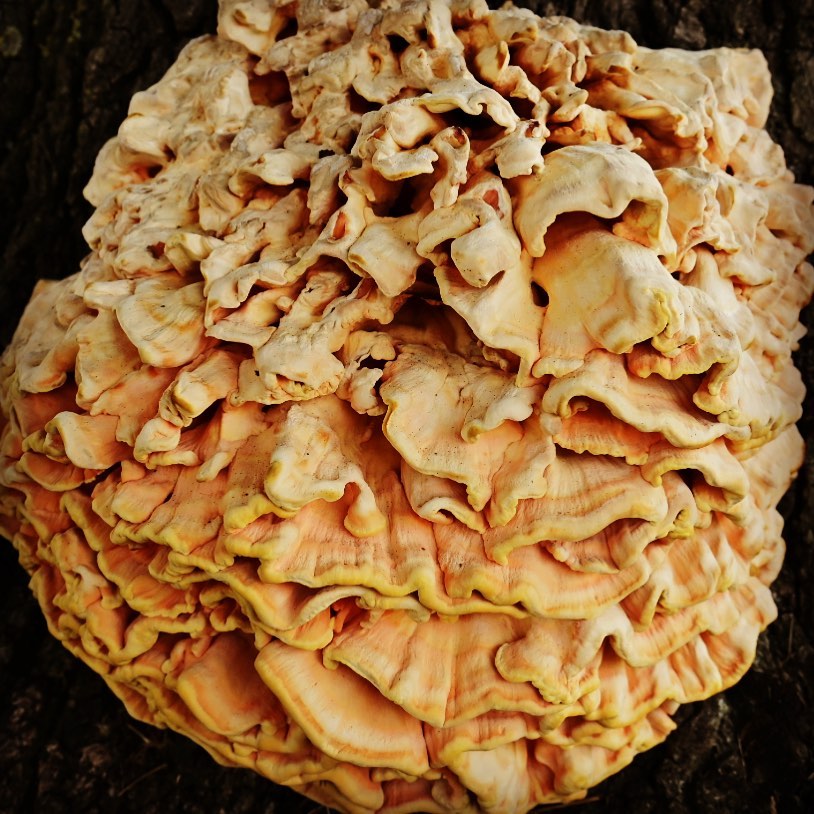
Maitake mushroom, also known as dancing mushroom because people would dance upon finding it, is spread across Europe, Asia, and North America. It grows next to old oaks and lindens, less often maples, and can also be found next to beeches and chestnuts.
The fruiting body of maitake mushrooms, which can be 11 to 20 inches long in diameter, is comprised of numerous overlapping caps. The edges are lighter and wavy, while the caps are brown and get darker as the mushroom ages. Its flesh is white, rather brittle, smells like flour, and tastes like stone fruit. Only young specimens that have not turned dark yet should be eaten.
9. Cauliflower Mushrooms (Sparassis Spp.)
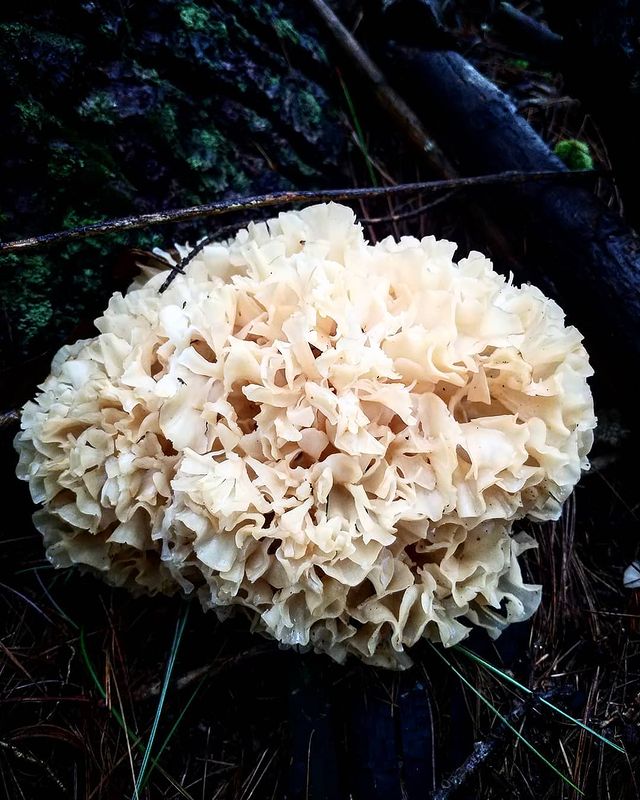
Fungi in the Sparassis genus have the appearance of a sea sponge or head of cauliflower, which is how the genus got one of its popular names. Therefore, cauliflower mushrooms don’t have a “real” cap or spike, as their fruiting body is composed of numerous curly shoots. It is round in shape, light brown to yellowish, and grows 4 to 15 inches in diameter.
Its flesh is white, fibrous, and elastic, with a pleasant smell reminiscent of immortelle, while the taste is sweet and slightly reminiscent of walnuts.
Cauliflower mushroom thrives in coniferous and mixed forests. It most often parasitizes on the roots of various types of pine, spruce, and fir, although it is also found next to oaks.
10. Shiitake Mushrooms (Lentinula Edodes)
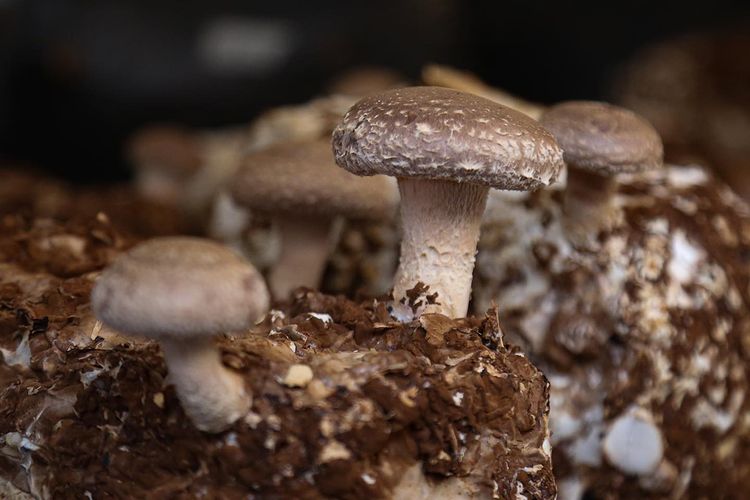
Shiitake mushrooms are highly valued mushrooms thanks to their nutritional and medicinal properties. They contain proteins, minerals (potassium, calcium, magnesium, selenium, sulfur, iron), B vitamins, and fibers.
Shiitake mushrooms protect the body from various degenerative diseases, prevent many organic disorders, destroy cancer cells, purify the body from harmful substances, give energy, increase vitality, etc.
11. Chanterelle Mushrooms (Cantharellus Spp.)
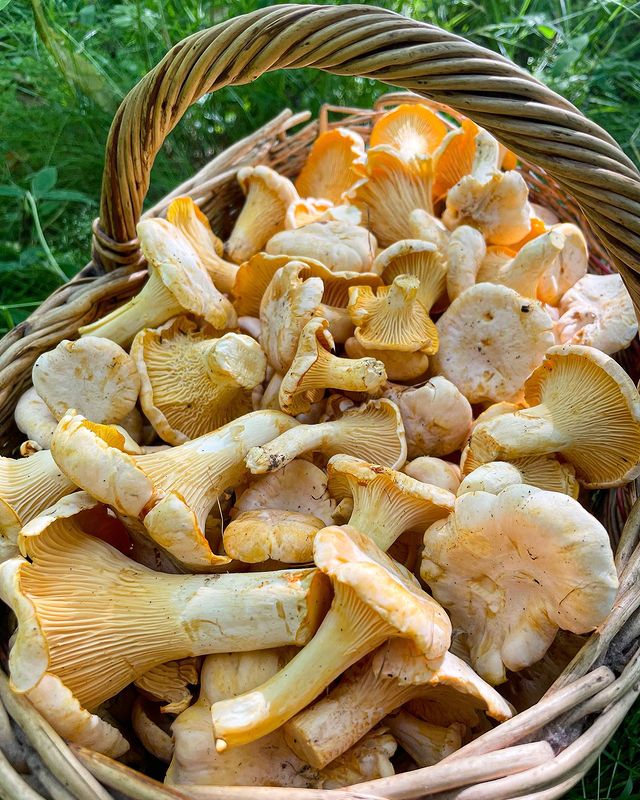
Chanterelle mushrooms are some of the most prized mushrooms in the whole world in terms of edibility. They grow in deciduous and coniferous forests from the end of May to autumn, usually in groups.
Their flesh is pale yellow but firm and rigid, making them harder to digest, so they must be boiled well. The smell is quite pleasant and intense, reminiscent of peaches, while the taste is sweet and slightly spicy.
People who collect mushrooms in the forest should watch out for false chanterelles (Hygrophoropsis aurantiaca) and Jack-o’-lantern mushroom (Omphalotus olearius), two poisonous mushrooms that, unlike chanterelles that grow on the ground, grow on tree stumps.
12. Parasol Mushrooms (Macrolepiota Procera)

Parasol mushrooms are one of the larger mushrooms from the Agaricaceae family, as they can grow up to 12 inches across and 16 inches long. Their habitats are bright forests all around Europe, but they can also be found in bushes, hedges, and along roads.
13. King Bolete Mushrooms (Boletus Edulis)
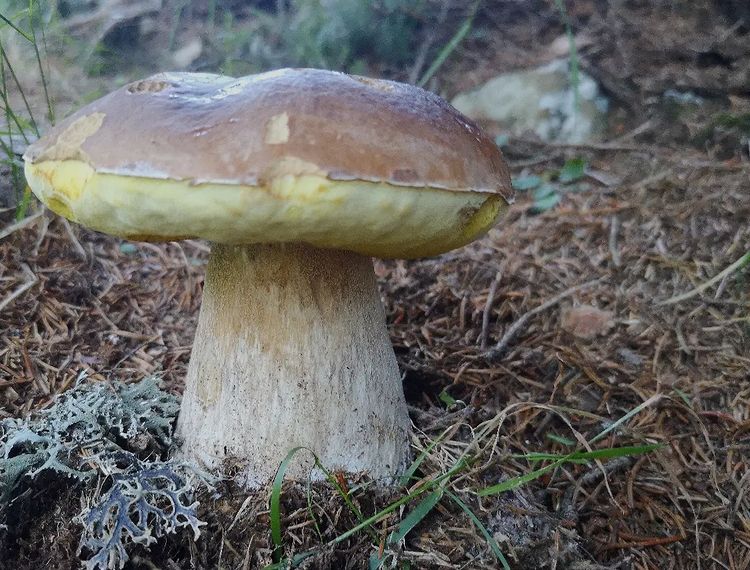
King bolete mushrooms are one of the world’s most valued and high-quality mushrooms. They got the Latin name from the phrase bolos edulis, which means edible nugget.
In some parts of the world, they are known as the “king of mushrooms”. However, their more popular name is porcini mushrooms.
The cap of the King bolete mushroom cap is brown, changing from light brown to chestnut brown as it matures. The stem is thick, while the flesh is white in color and firm in structure, although it softens and becomes spongy with age.
Porcini mushrooms can be consumed raw, thermally processed, dried, and pickled.
14. Red-capped Scaber Stalk Mushroom (Leccinum Aurantiacum)
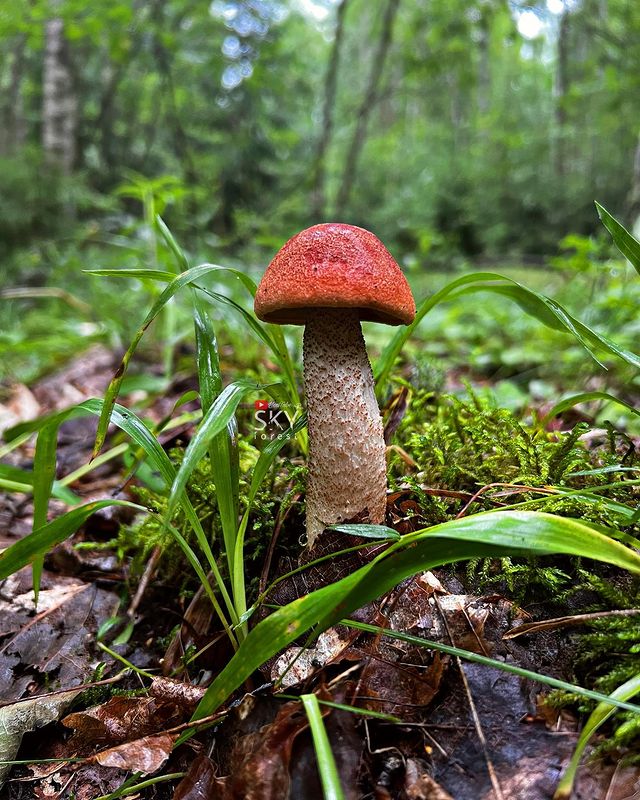
Red-capped scaber stalk is an edible mushroom from the Leccinum genus characterized by a red hat with a golden coating. It can also be recognized by green-blue striae at the bottom of the stem.
Its meat is white and reddish to black when cut. It becomes black when cooked and dried, firm, with a pleasant smell and taste.
Leccinum aurantiacum is widespread in deciduous and coniferous forests of Europe and North America and grows in large groups from late spring to late fall.
15. Reishi Mushrooms (Ganoderma Lingzhi)
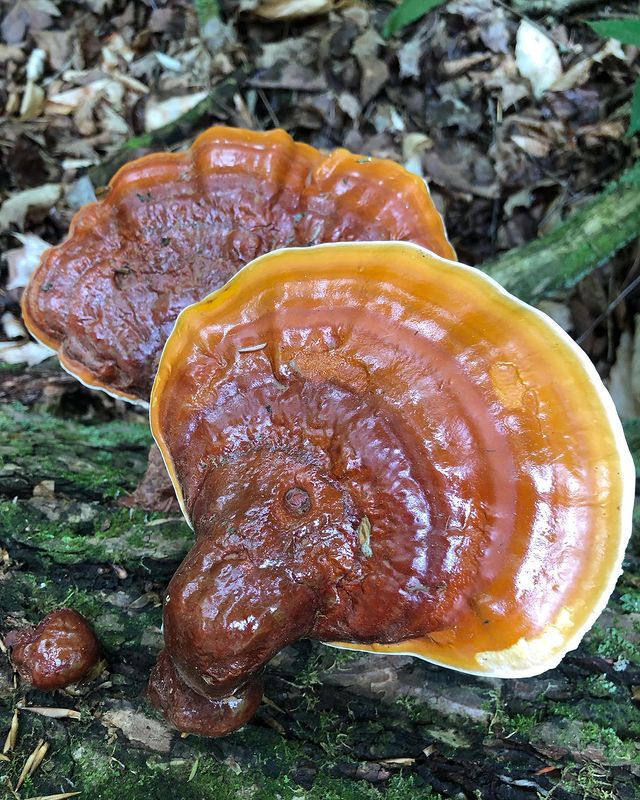
Reishi mushrooms grow on trees as a parasite on a living trunk that it destroys or as a saprophyte on a dead trunk that decomposes. We often find them on oaks, but they also grow on other deciduous trees.
The smooth and shiny body is hard and leathery, with a bumpy surface. It features distinct concentric circles that flow from dark red in the middle to completely white at the edge, which is irregular and wavy.
Reishi mushrooms are one of the more popular medicinal mushrooms used for strengthening the immune system, treating allergies, arteriosclerosis, dizziness, neurasthenia, and certain types of cancer.
They can also be utilized for better concentration and memory and the body’s general health.
16. Field Mushrooms (Agaricus Campestris)
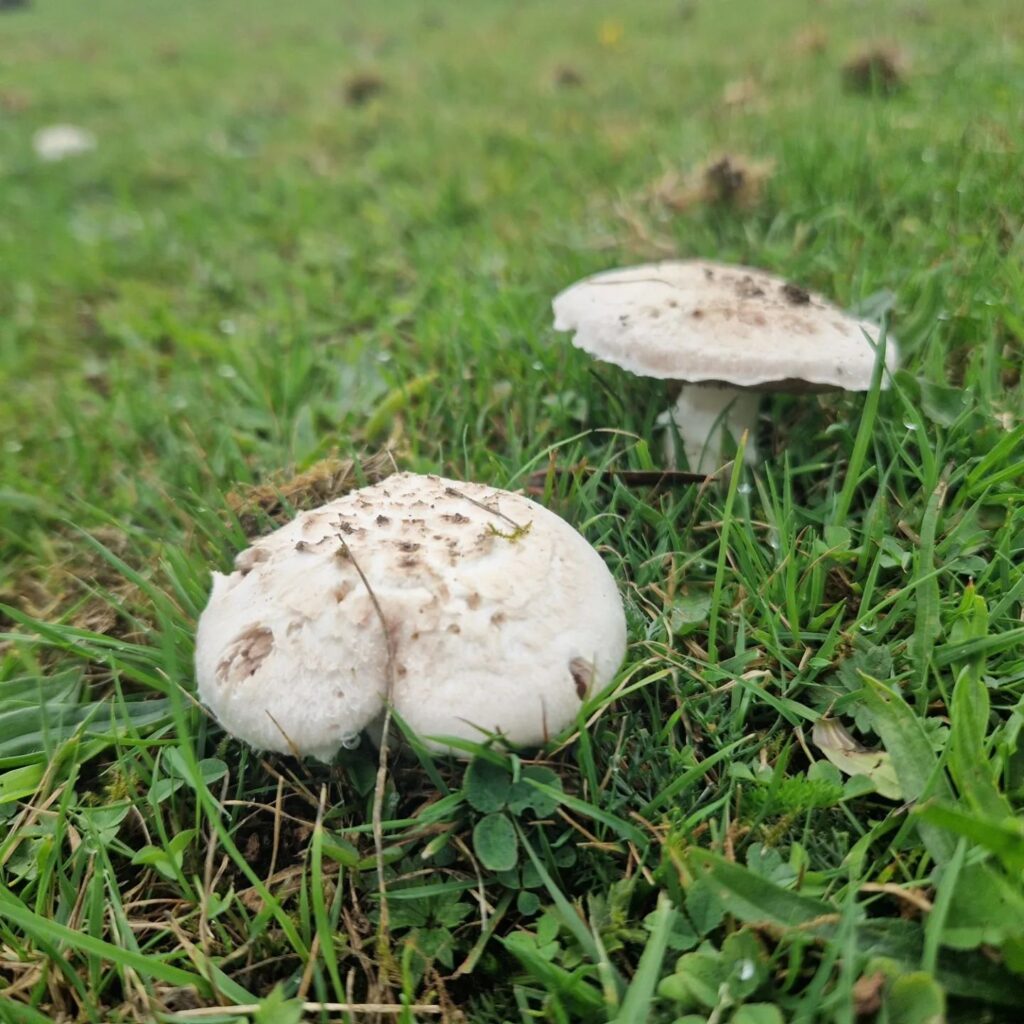
Field mushroom is a relative of the more popular Agaricus bisporus. Its cap is initially round, then more and more open, and with age, it spreads flat, although it almost always remains slightly convex. It is often white, but sometimes it can be covered with whitish-brown scales.
Field mushrooms are some of the most common edible mushrooms since they are widely distributed worldwide.
17. Green Cracking Russula (Russula Virescens)
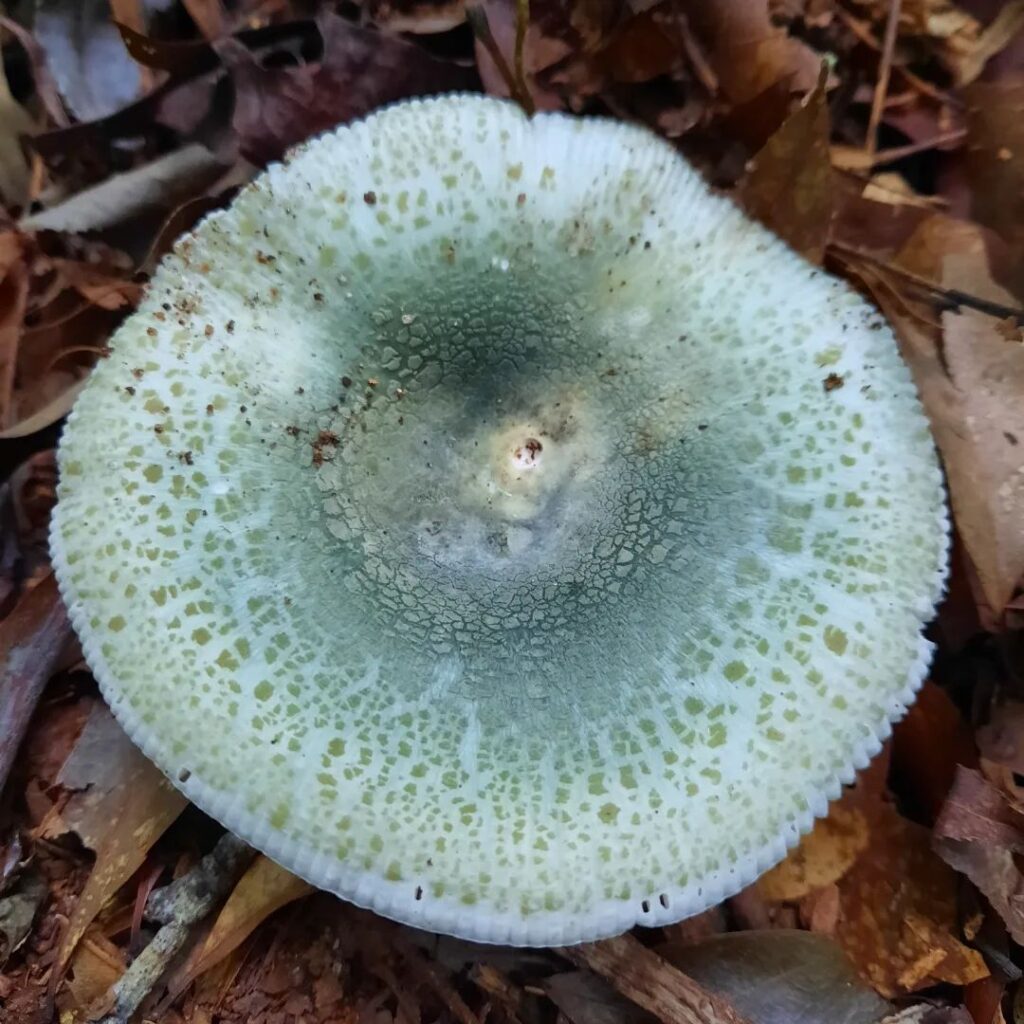
The name of the genus Russula, which includes about 750 species, was chosen because the cap color of most species is red. The species name, though, virescens, means that which turns green since the center of the cap becomes greener with age.
Green cracking russula has a mild and nutty flavor that intensifies with drying and is one of the tastiest mushrooms within the genus Russula. It’s also one of the healthiest mushrooms in the genus and contains vitamins such as B3, E, B, C, PP, etc.
18. Lion’s Mane Mushrooms (Hericium Erinaceus)
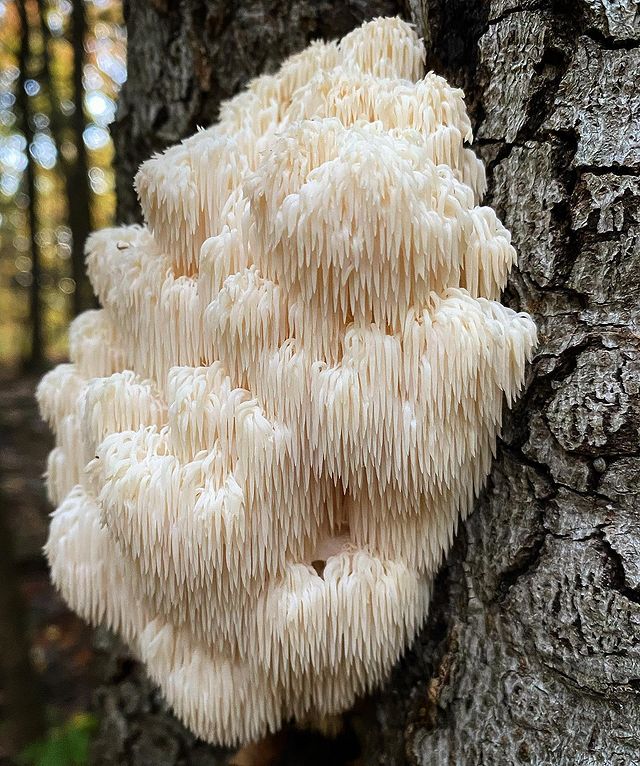
Hericium erinaceus is a type of edible mushroom that irresistibly resembles the mane of a lion. It is equally used in medicine and cooking, so in addition to restoring neurons, it serves as an addition to dishes.
In nature, Lion’s mane mushroom grows on withered trees, usually beech or oak, but due to its properties, today, it is grown in artificially controlled conditions all over the world.
This mushroom has a taste similar to that of shrimp or lobster, which, together with the fact that it consists of as much as 20 percent protein, makes it a pretty popular mushroom on menus in high-end restaurants and catering chains.
It is used in treating multiple sclerosis and muscular dystrophy. Furthermore, due to the promotion of the nerve growth factor, i.e., nerve tissue growth factor, Hericium erinaceus is indispensable in battling Alzheimer’s disease and dementia. In general, it is exceptional in treating all nervous system diseases.
Related: M Is For Mushrooms: Mighty Veggies That Start With ‘M’
19. Pinkmottle Woodwax (Hygrophorus Russula)
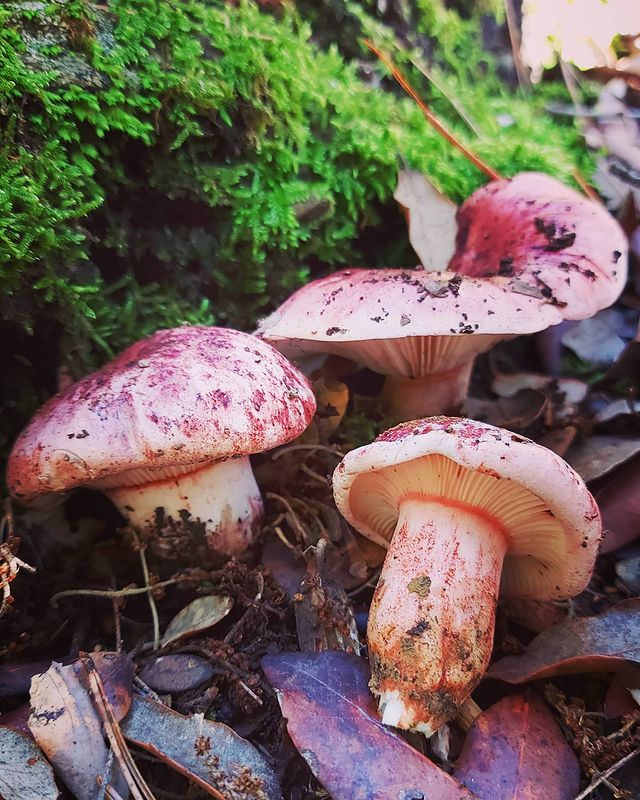
Pinkmottle Woodwax is a type of wild mushroom that grows in the mycorrhiza with deciduous trees, especially under oak or beech, where it grows singly or in small groups.
It has a red wine-like hue with a pink tint, often with streaks or spots of color, sometimes yellow in damaged places, especially in the middle. The meat is white and hard but turns red after a short time when cut. The smell and taste are not pronounced, although, in older specimens, the taste is bitter.
20. Morel Mushrooms (Morchella Spp.)
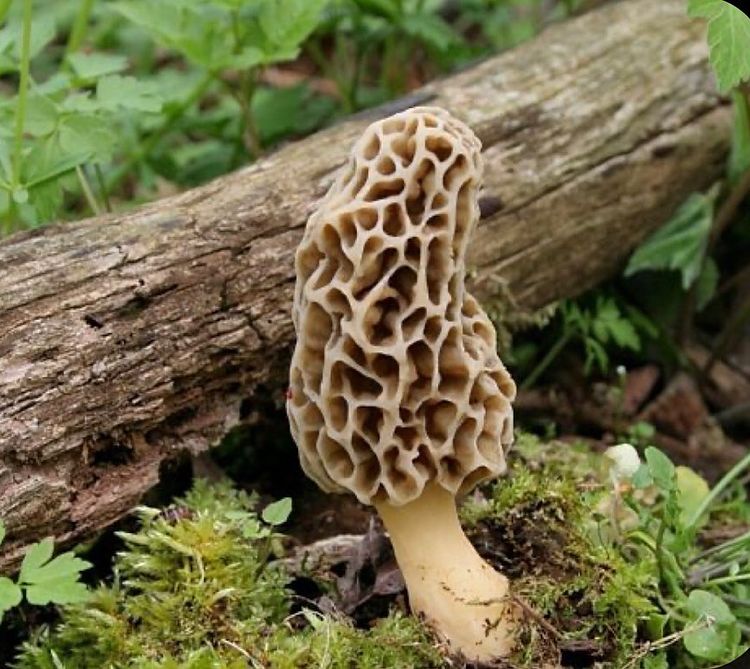
Consensuses in gastronomy are almost impossible. However, the prevailing opinion that morels are the tastiest mushrooms in the world certainly belongs among the rare global gastronomic agreements. It is also quite hard to cultivate morel mushrooms which just adds to their attractiveness as highly prized wild mushrooms.
Morel mushrooms live as saprotrophs in habitats such as forests, river sediments, ruderal habitats, incinerators, etc.
Although they are delicious mushrooms, morel mushrooms should not be eaten raw but well thermally processed because otherwise, they cause severe digestive problems.
Their fruiting body consists of a conical or irregularly round cap and a spike. The surface of the hat consists of a mesh system of ribs that close polygonal dimples.
21. Egg Mushrooms (Phallus Impudicus)
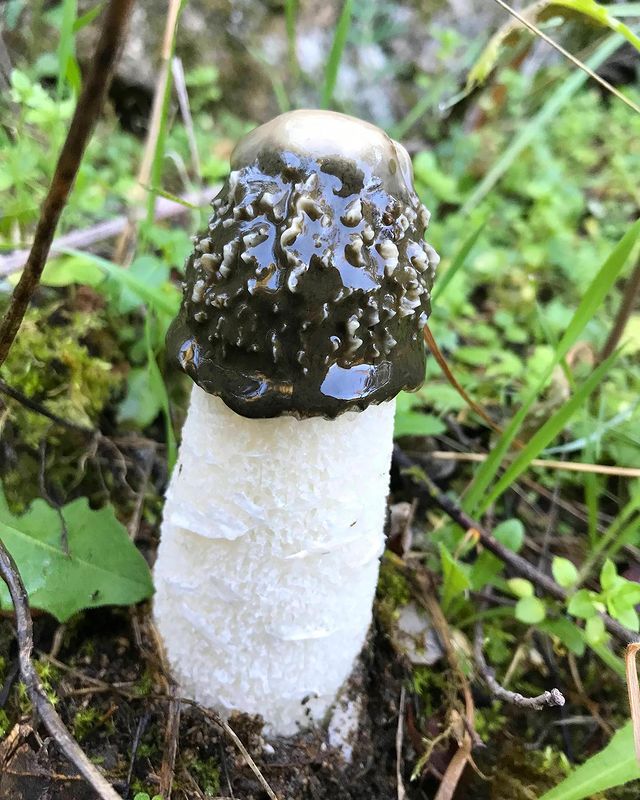
Egg mushrooms are one of the few mushrooms you’ll smell before seeing them. In the forest, you can often get a whiff of the characteristic smell reminiscent of dead flesh, but it is not always easy to find the mushroom that produced it since the smell can spread over long distances.
At the beginning of development, the fruiting body is in the form of a round white egg or envelope, inside which is a gelatinous layer that protects the grayish-green mass with spores.
Egg mushroom is conditionally edible only when it is young, i.e., in the form of an egg. In addition, it is necessary to process it thermally before consumption.
22. Orange Peel Fungus (Aleuria Aurantia)
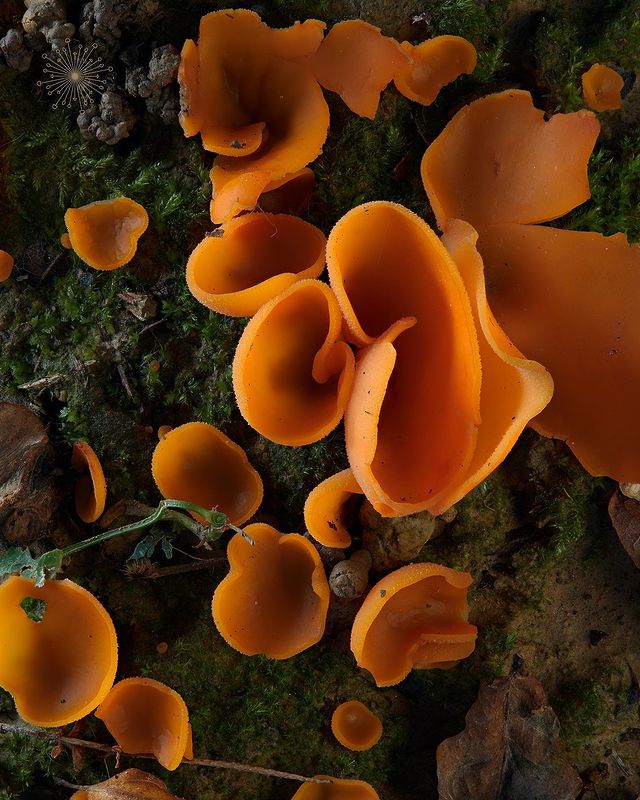
Orange peel fungus is one of the most colorful but at the same weirdly shaped mushrooms. The inner part of the fruiting body is orange-red, initially round and bowl-shaped, later irregular and wavy, while the edges are slightly twisted inwards.
The outer surface is whitish or whitish-orange and covered with tiny whitish spores. And the stem? It is almost non-existent, which makes it look like this mushroom grows directly from the ground.
Orange peel fungus, which belongs to the Pyronemataceae family, can make for a mushroom delicacy when mixed with various liqueurs and sugar.
23. King Oyster Mushrooms (Pleurotus Eryngii)
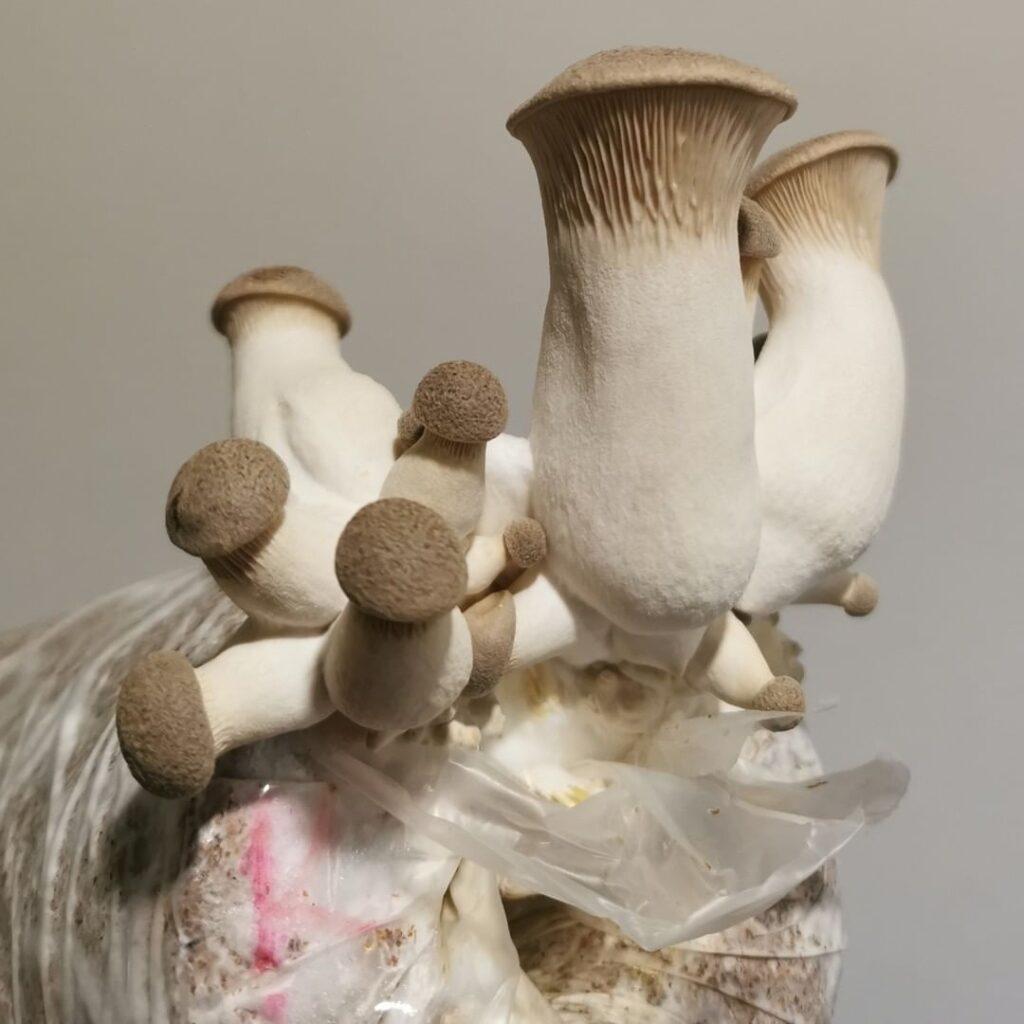
King oyster mushrooms are the largest mushroom species in the oyster genus. They’re native to the Mediterranean, the Middle East, and North Africa but grow in different parts of Asia.
They have a fleshy, white stem, up to four inches long, and a small brown cap, one to five inches in diameter, under which there are light brown tassels.
King oyster mushroom, also known as King brown mushroom, features a superior taste and consistency compared to other oyster mushrooms. It has a meaty texture and is easier to chew. Due to its thick meat, it can stay fresh for several days longer than its relatives.
King oyster mushrooms are rich in proteins (up to 30% in dry matter), B complex vitamins, and have significant amounts of lovastatin molecules, which naturally lowers cholesterol.
24. Slippery Jack Mushroom (Suillus Luteus)
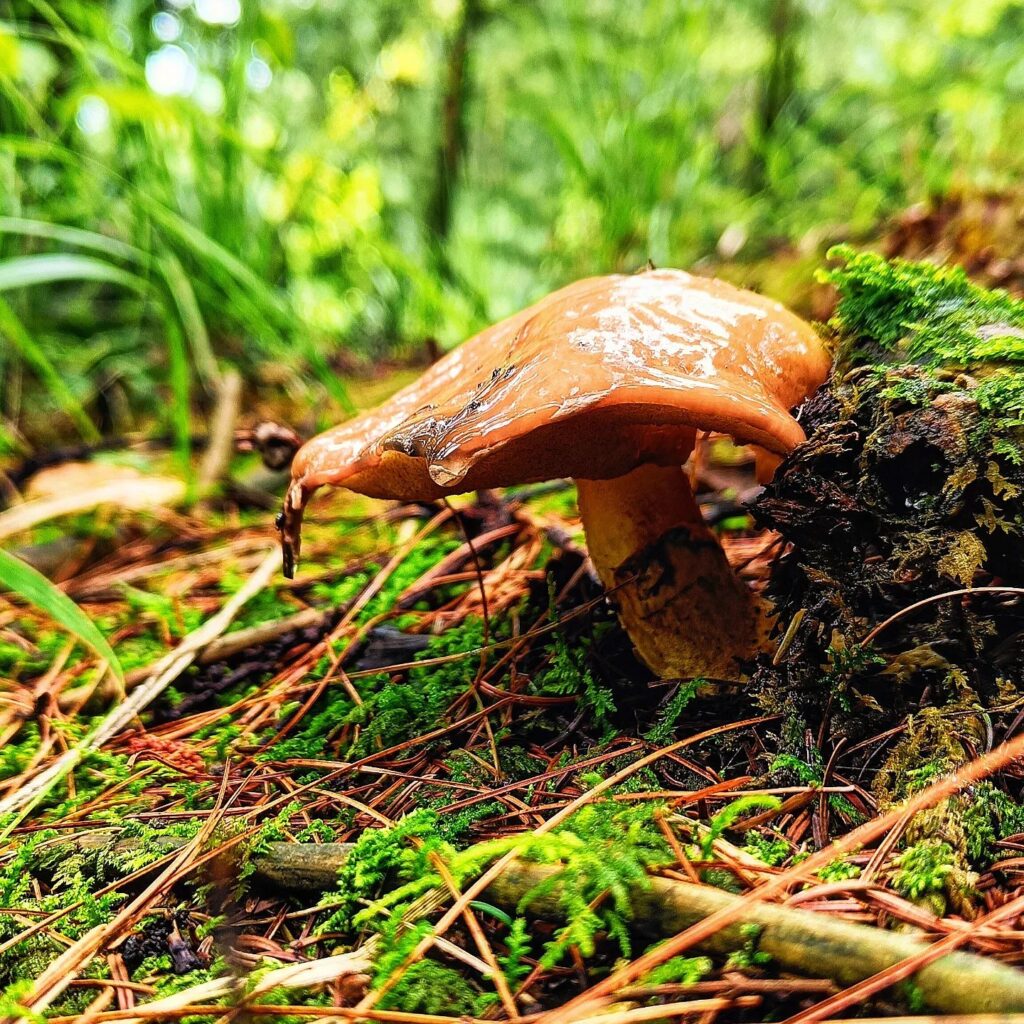
Primarily found in pine forests, Slipper Jack is a highly prized mushroom whose peeled cap is edible. A special feature of this mushroom is its late growth, thanks to which you can often find specimens frozen after the first frost.
The hat is darker or lighter chocolate brown, convex, and very regular in shape, with a diameter of two to five inches. The edge is slightly bent towards the ground in younger specimens, while in older ones, it opens upwards.
25. Wood Ear Mushrooms (Auricularia Auricula-judae)
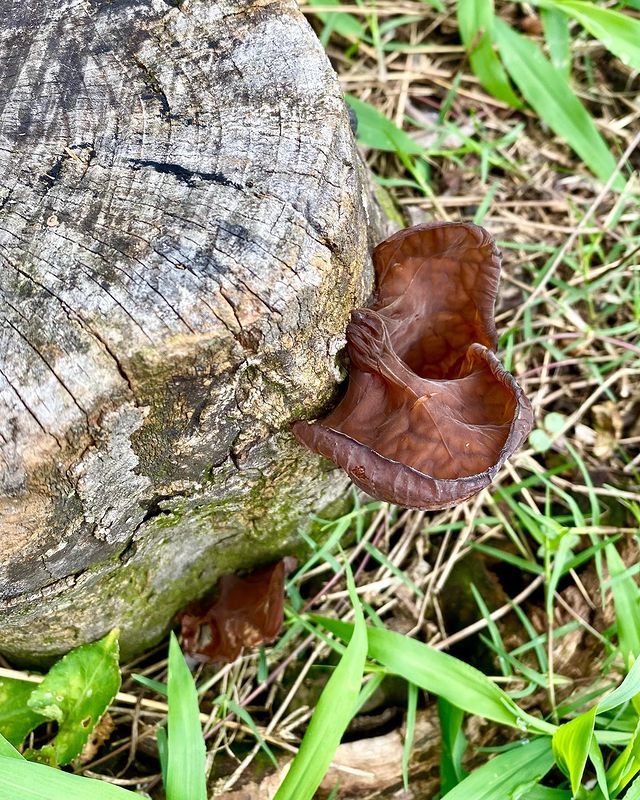
Wood ear mushrooms are a type of edible and medicinal mushrooms from the Auriculariaceae family, which are quite popular in Asian cuisine.
The flesh is initially brown to dark brown in color, elastic, leathery, and rigid in structure, with a slightly harder consistency and black color when old. The spores are cylindrical and smooth.
Wood ear mushroom is an edible mushroom, even in its raw form. It can be dried, after which it becomes hard, but if it is placed in water for a short time, it grows larger, softens, and can be further prepared as desired. It is popular in Asian cuisine.
Wood ear mushrooms are used in regulating high blood pressure and treatment of hemorrhoids since they can expand blood vessels.
26. Caesar’s Mushrooms (Amanita Caesarea)
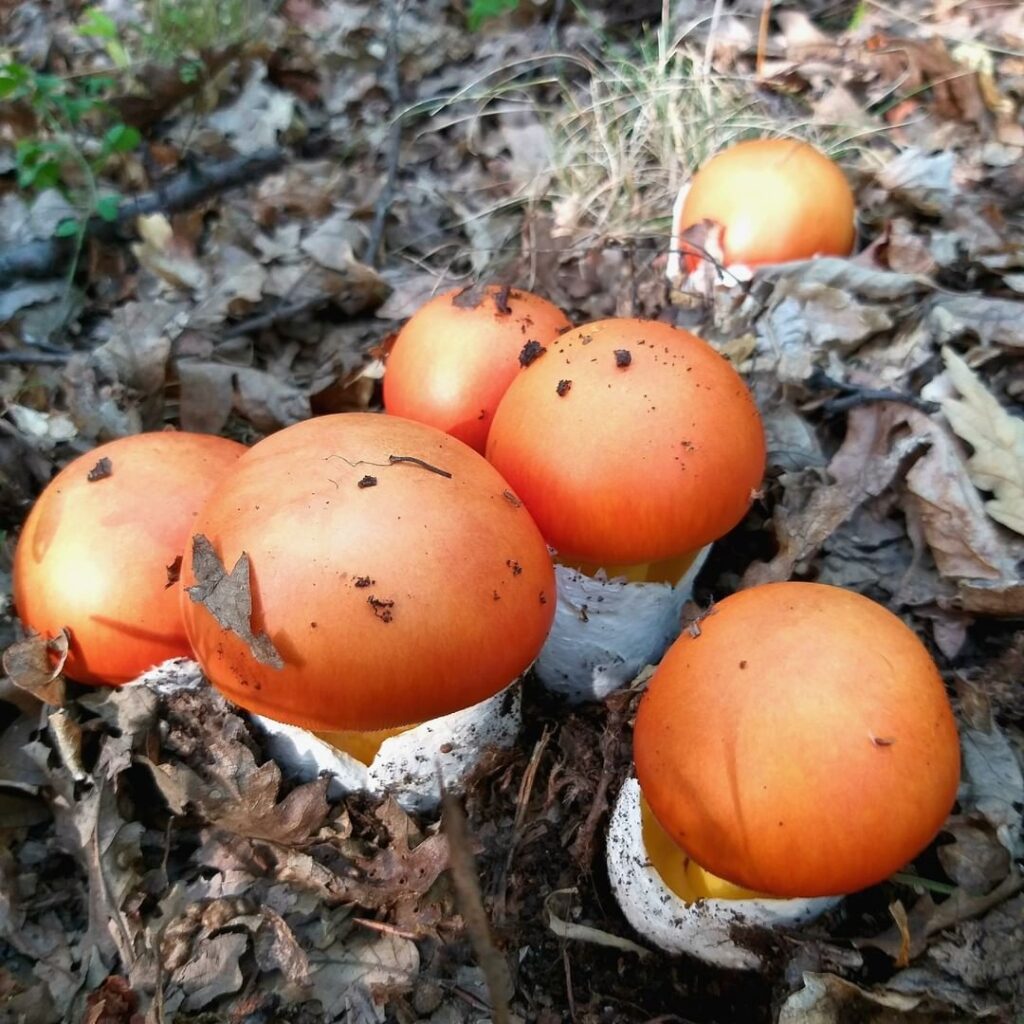
Caesar’s mushroom was a prized mushroom on the table of emperors and high officials of the Roman Empire, which earned it its popular name.
Caesar’s mushrooms are great for canning and are even edible raw, although eating them when they’re egg-shaped isn’t recommended because that means they haven’t reached the development stage and released their spores.
27. Poet’s Wax Cap (Hygrophorus Poetarum)
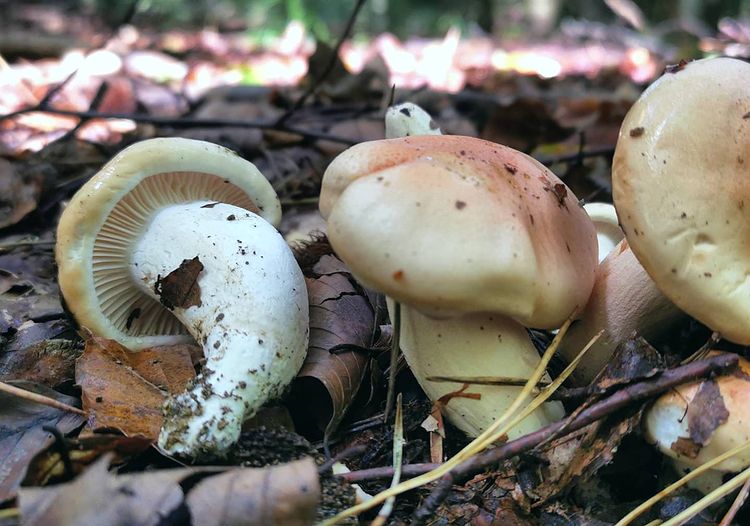
Poet’s wax cap’s natural habitat is exclusively beech trees, to which it is attached by mycorrhiza. It is also a mushroom that features white and waxy flesh. The flesh has a great flavor and even more pronounced smell, which is quite aromatic and intense, reminiscent of Peruvian balsam or jasmine.
Thanks to these qualities, it’s highly sought-after, but it’s on the list of protected mushroom species in many countries around the world, so it’s better to leave it off the menu.
28. Charcoal Burner Mushroom (Russula Cyanoxantha)
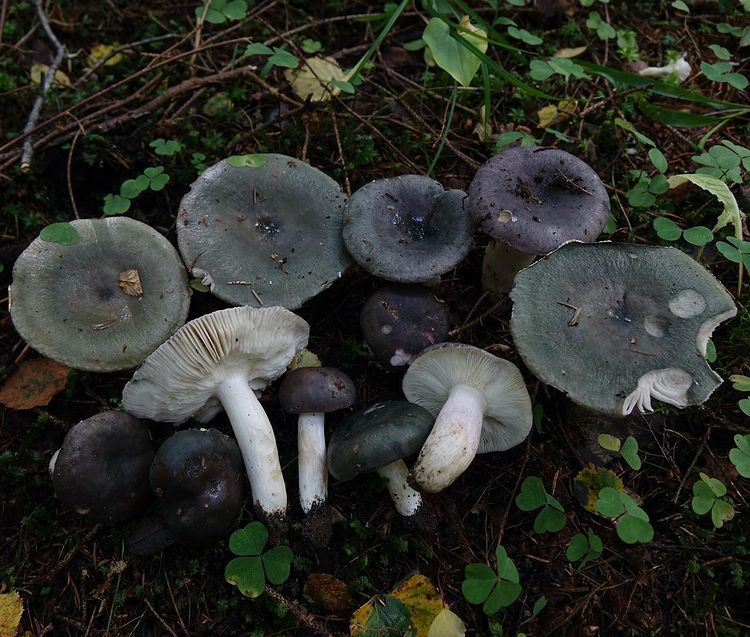
Charcoal burner mushroom is amongst the most popular edible wild mushrooms, but only its cap is used in meals after the skin is removed.
Its cap is two to six inches long across and variable in color since it can be blue-green, dark purple, yellowish, or brown. It is smooth and meaty and round when the fungus is young. As the mushroom matures, it becomes open and slightly hollowed in the middle.
This mushroom doesn’t have a particularly noticeable smell but has a nutty flavor.
29. Paddy Straw Mushrooms (Volvariella Volvacea)
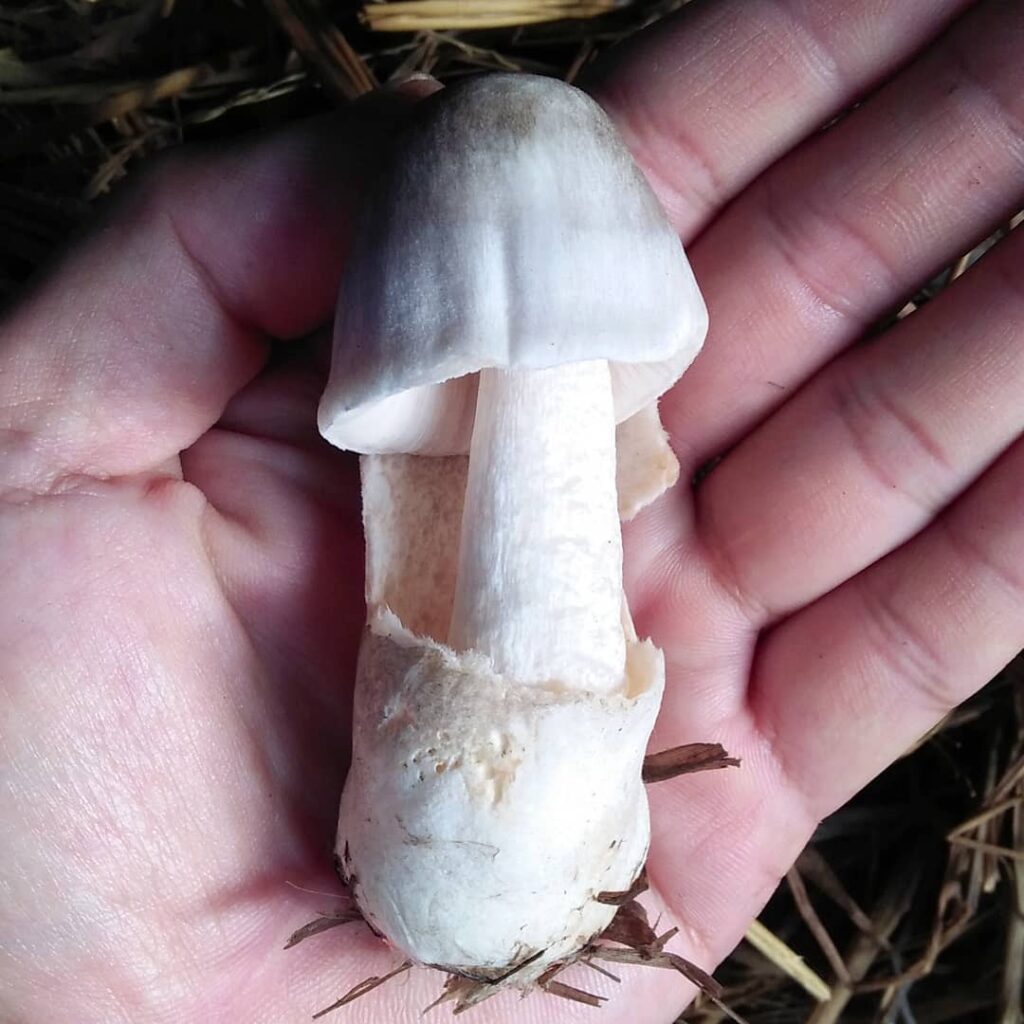
Native to East and Southeast Asia, the paddy straw mushroom is one of the most popular types of edible mushrooms not just in Asian cuisine but everywhere in the world. This tropical mushroom earned the name straw mushrooms since it’s usually cultivated in rice straw beds.
It doesn’t feature a distinctive odor or taste, which is it’s usually found in savory and spicy dishes, especially in vegan dishes where it acts as a great meat substitute.
30. Chicken of the Woods Mushroom (Laetiporus Sulphureus)

Mushrooms that grow on a stump or tree trunk are known to be very tasty, such as oyster mushrooms or elm mushrooms. Chicken of the woods mushrooms are another super delicious and sought-after mushrooms whose flavor is reminiscent of white chicken meat. And it also has the same color!
Chicken of the woods shrooms grow from spring to late fall on living deciduous trees and fruit trees (willow, cherry, plum, etc.), causing them to decay. They should be eaten when they’re young as older mushrooms are woody and unsuitable for eating.
31. Honey Nut Mushrooms (Armillaria Ostoyae)
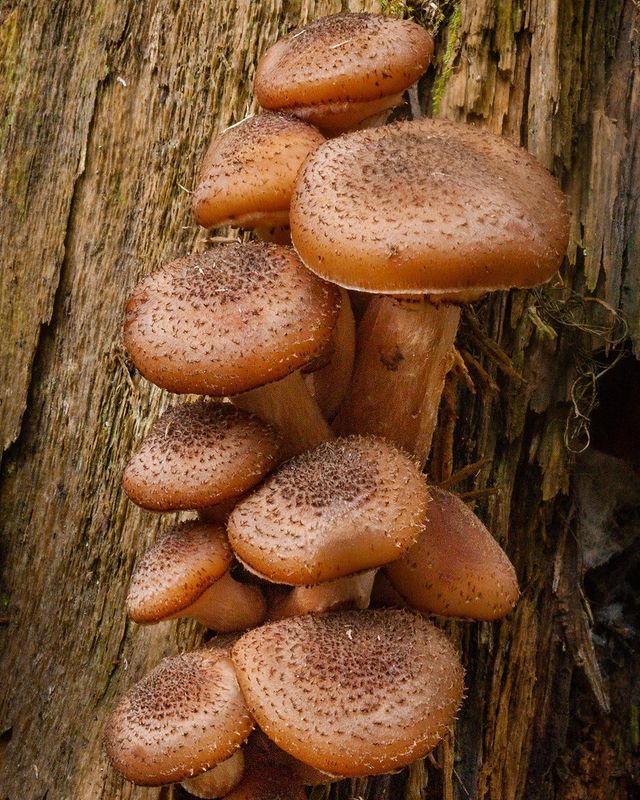
You were wrong if you ever thought that blue whales are the largest living organisms.
A specimen of honey nut mushroom in the Maler National Forest in eastern Oregon occupies a circle with a diameter of about 4 miles.
Research has shown that the fruiting bodies of this single specimen have identical DNA, meaning they belong to the same organism or a clonal colony, which makes it the largest living organism on Earth. Its estimated age is around 2400 years.
32. Ringless Honey Mushroom (Armillaria Tabescens)
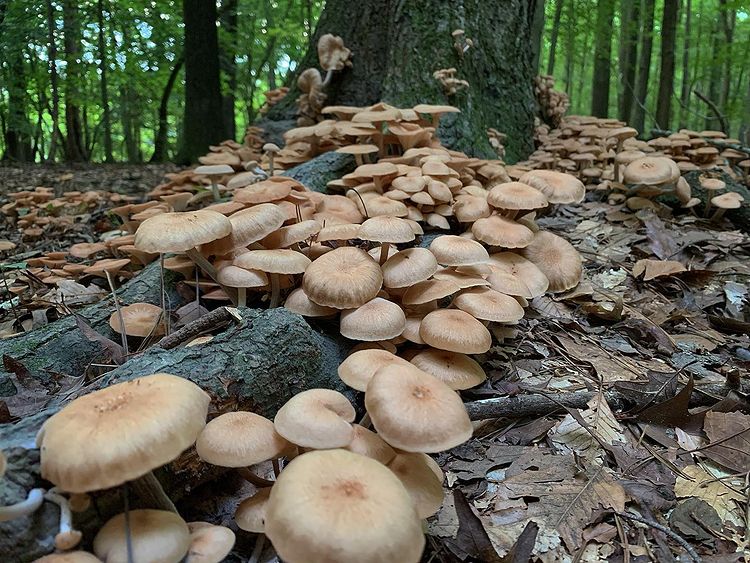
Armillaria tabescens is a mushroom whose two-and-a-half to three long inches bell-shaped cap is yellow-brown, fleshy, and bulging. It is covered with small, dark warty fibers that later contract and rise like warts on the scalp.
These mushrooms grow from June to September in a large number of specimens compacted together, often looking like they’re standing one above the other. They are yellowish-brown in color, bell-shaped, and covered with slightly darker warty fibers. The stem is black in the lower part, and the upper part is bright brownish white.
Ringless honey mushroom is of excellent quality but shouldn’t be eaten raw. Only caps are used because the stems are stiff and tough. You should also know that worms are very fond of old specimens.
33. Wine Cap Stropharia (Stropharia Rugosoannulata)

Wine cap stropharia is an edible mushroom from the stubble family (Strophariaceae). It is prevalent in Western Europe, especially in Germany, because it tastes similar to radish.
Its cap is yellowish or brownish with a purple tint. In young varieties, it’s semicircular, later more open. Older specimens also feature radial cracks.
34. Shimeji Mushrooms (Hypsizygus Tessellatus)
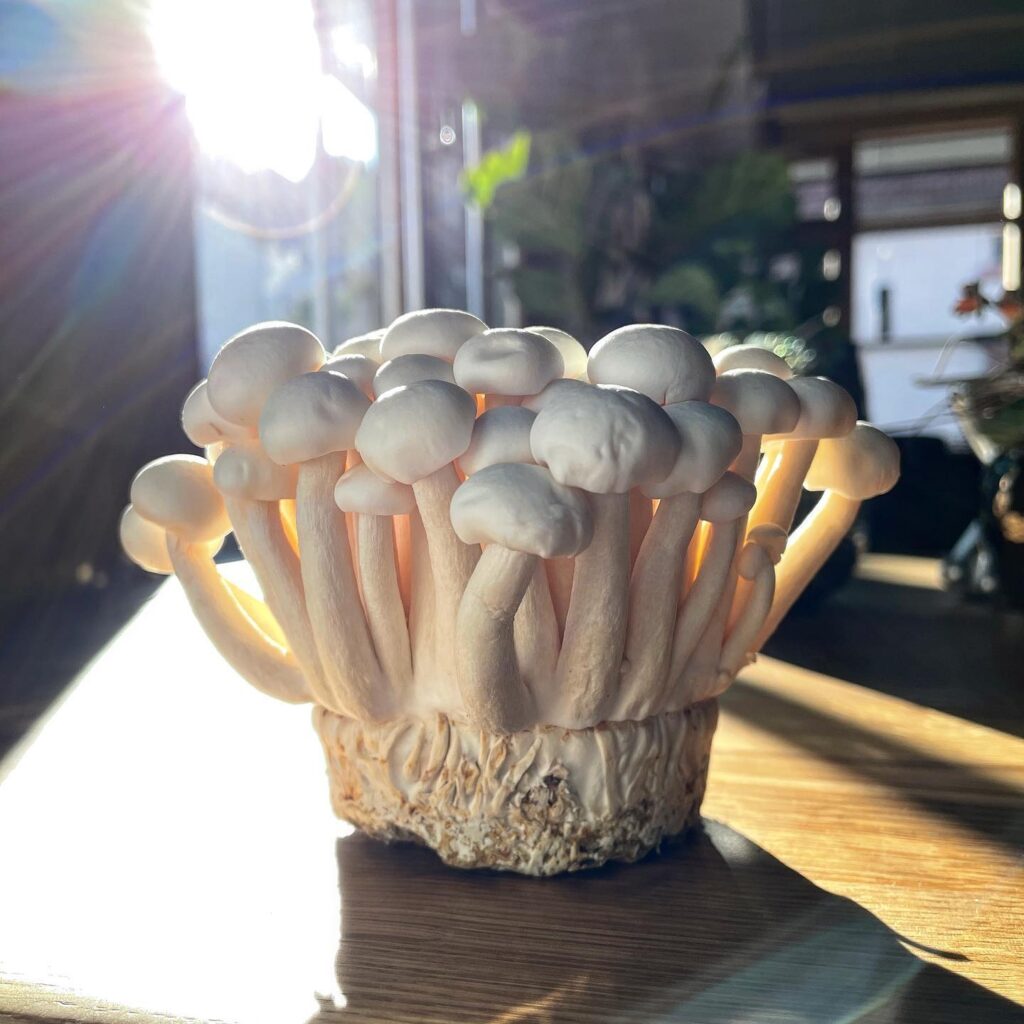
35. Matsutake Mushrooms (Tricholoma Matsutake)

Tricholoma matsutake, a mushroom also known as pine mushroom, grows in coniferous forests in Japan, China, and Korea. They’re mostly found in cooler regions, under pine trees.
Although it is robust, with a white hat that features brown shades in the middle, up to 10 inches in diameter, and a thick white stem, it is difficult to spot it under needles and fallen leaves. Matsutake mushrooms can also be recognized by their yellowish-brown spores.
Matsutake mushrooms are one of Asia’s most prized wild mushrooms due to their rich flavor, fruity and spicy smell, and rareness.
36. Wood Blewit Mushrooms (Clityocybe Nuda)
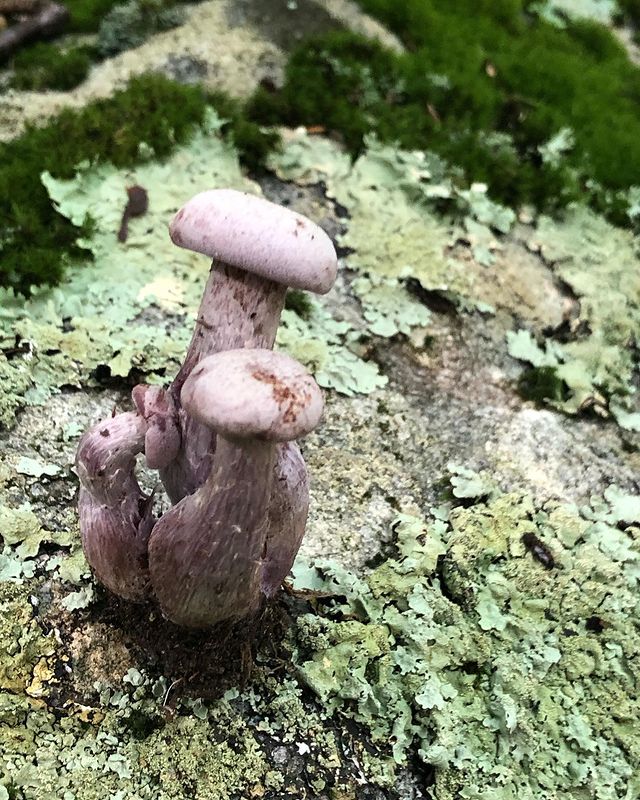
The Latin name of the genus Clitocybe is a compound of the Greek words klitos (inclined, angled) and kube (head) due to the cap’s appearance.
Wood blewit mushrooms are widespread in Europe, parts of Asia, North America, and Australia, where they were introduced. They grow in large groups, usually in circles. We can find them mostly in autumn, and from time to time in winter as well.
They are saprophytic fungi, living on organic waste and the ground under deciduous and coniferous trees.
Wood blewit mushrooms shouldn’t be consumed raw as this can cause stomach pain.
They contain amino acids such as essential valine, leucine, and lysine and non-essential ones such as glutamic acid, aspartic acid, and alanine.
37. Abruptly-bulbous Agaricus (Agaricus Abruptibulbus)
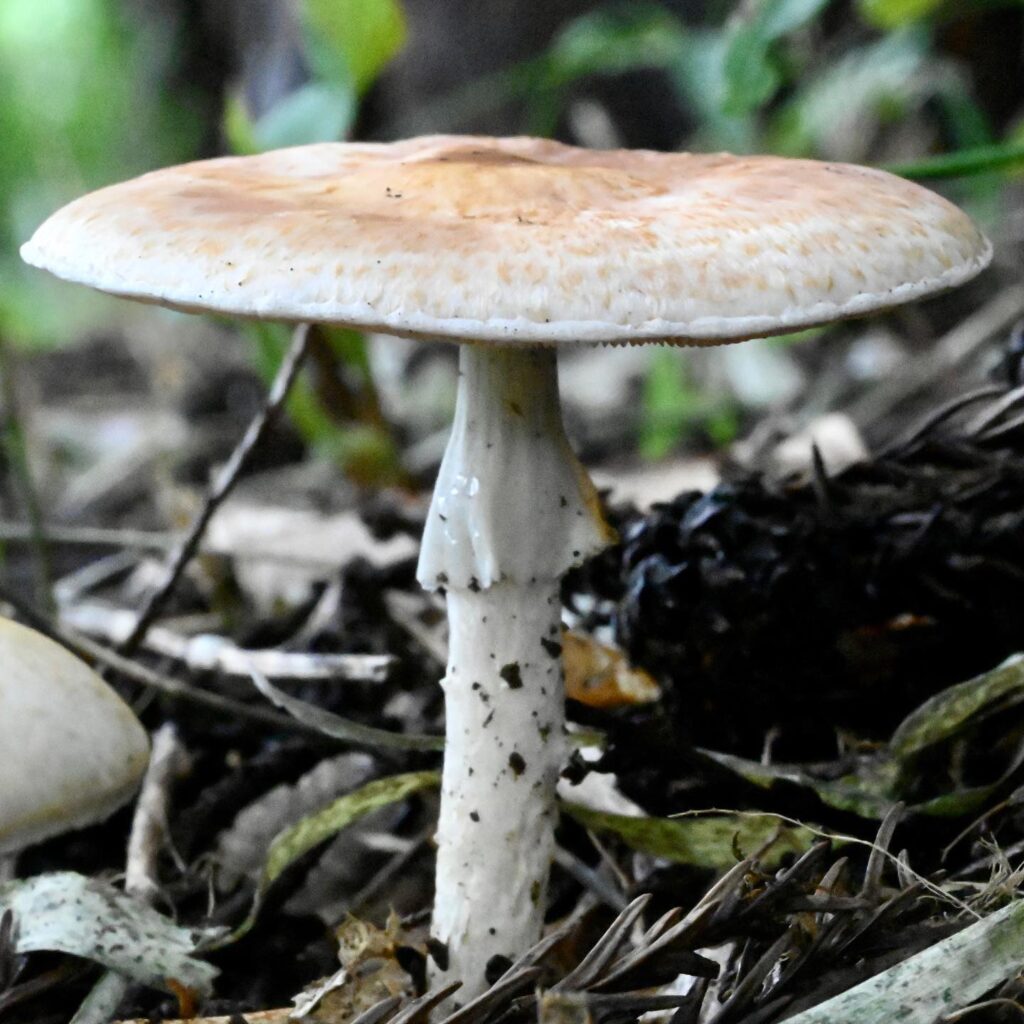
Abruptly-bulbous agaricus is a type of edible mushroom found in Europe, although it has also been seen in some areas in the USA and Canada. It grows in temperate climates, coniferous and deciduous forests, and parks in the litter of pines or leaves.
The hat, which is three to four inches long in diameter, goes through many phases during its lifetime. Initially, it’s bell-shaped but then develops into a truncated cone with the ends bent inwards and hidden leaflets. In later stages of life, it resembles an umbrella not opened fully, after which it flattens like a disc. The color of the hat is a white or light cream, but over time it acquires a yellowish-orange tone.
The white meat of this mushroom is tender and thin with an anise smell.
38. Giant Puffball Mushrooms (Calvatia Gigantea)
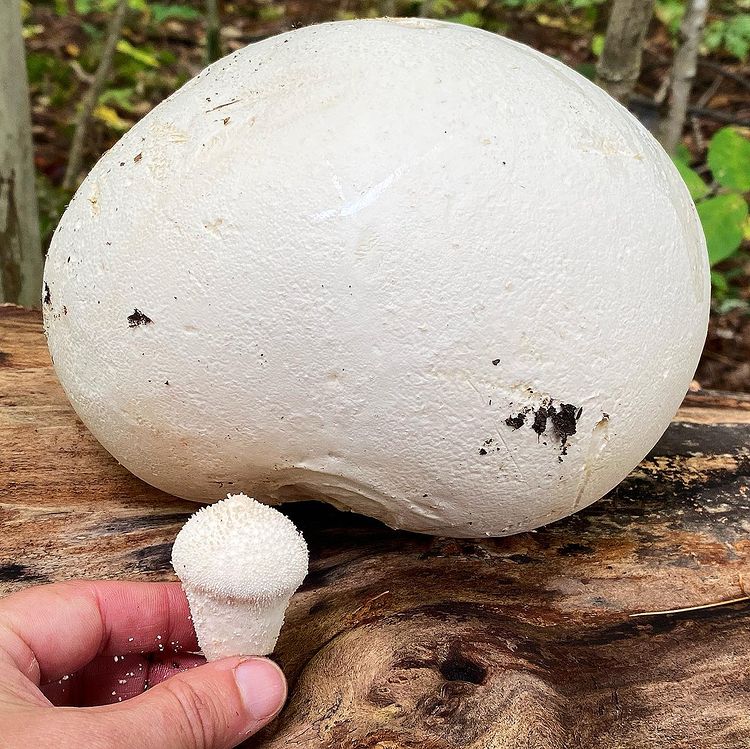
Giant puffball mushrooms are some of the biggest mushrooms that grow up to 30 inches in diameter and can weigh as much as 40 pounds. They are of excellent quality but edible only when they’re young and while their inside is white.
Before use, it is necessary to peel off the outer casing. When the fruiting body becomes brownish, spores start to be produced, and in such a state, consumption can cause digestive problems.
39. Hedgehog Mushrooms (Hydnum Umbilicatum)
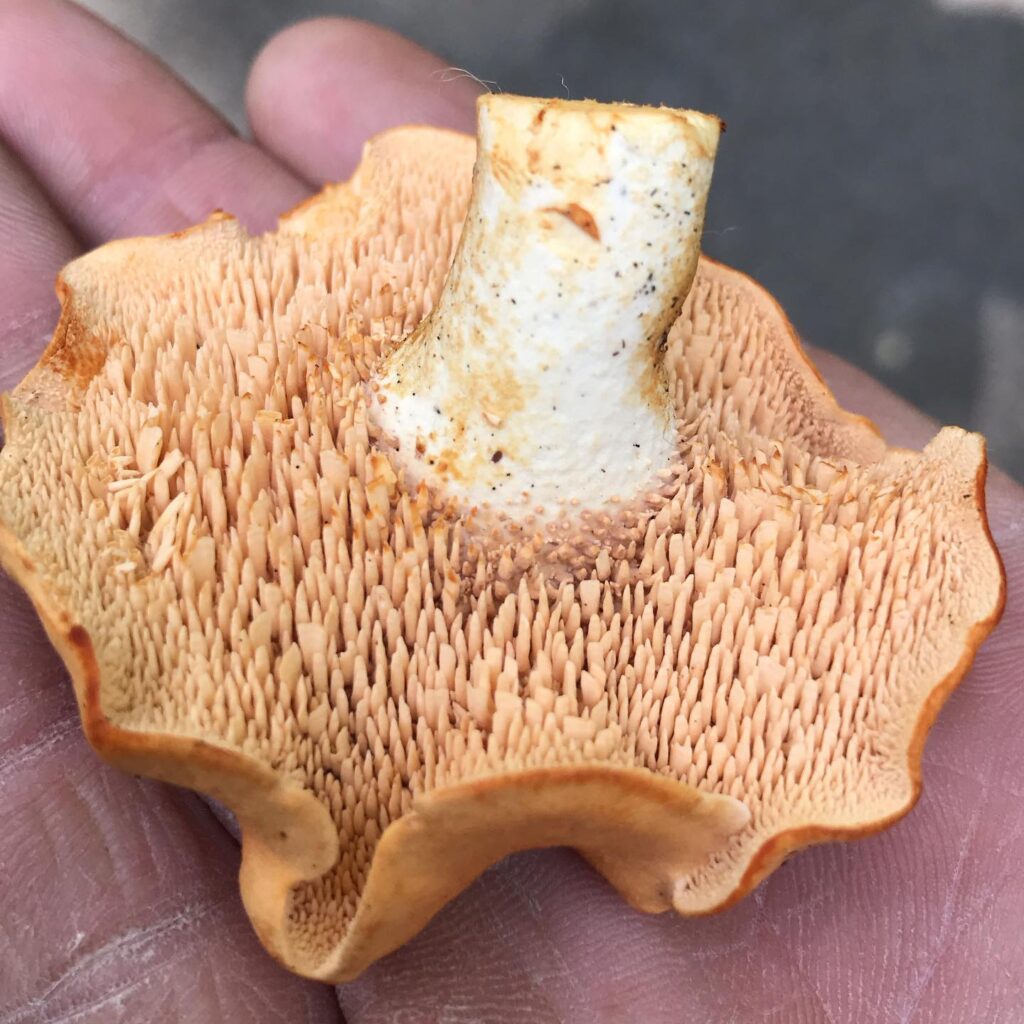
The skin of the cap is a pale yellow to creamy white, but it can also be pale orange, pinkish-yellow, pale walnut, pale ocher, or rusty orange, depending on where it grows. The bumpy hat is flat and has a smooth surface, often irregular shape, and curled edges. From time to time, hats and even stems of two neighboring species merge.
Unlike other mushrooms, the hedgehog mushroom has spikes on the underside of the cap, not gills, which point downwards. Sometimes they reach the very brim of the hat.
Hedgehog mushrooms are unique in that there are no similar poisonous mushrooms and therefore are very safe for harvesting, even for inexperienced mushroom hunters.
40. Red Pine Mushroom (Lactarius Deliciosus)
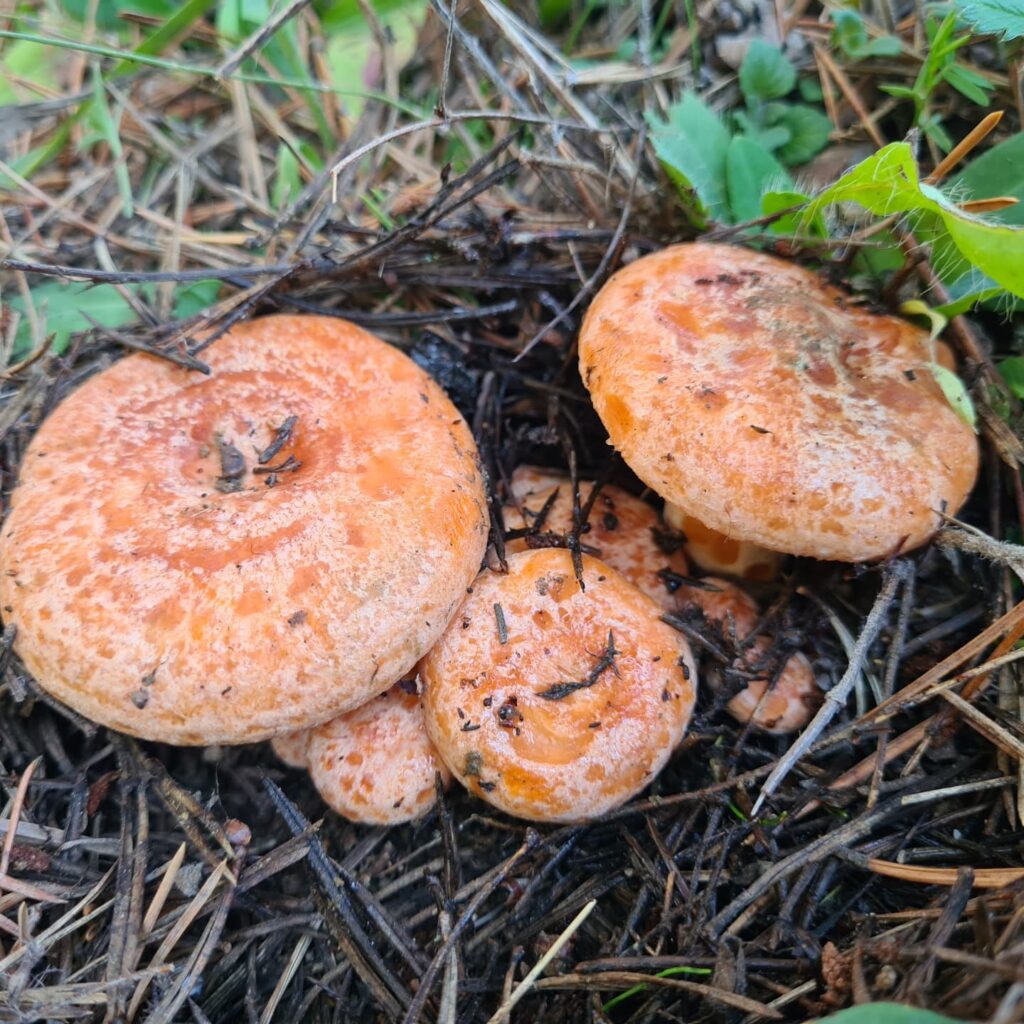
Red pine mushrooms grow in groups under pine trees and have a slightly sweet taste and a fruity or carroty taste. Their flesh is firm and fragile, light orange or bright orange under the cap’s skin.
In addition to the usual preparation by cooking and baking, it can also be consumed raw, dried, pickled, or processed into an extract – mushrooms are cooked in their own juice, which is then poured into another container with a little bit of salt and boiled until it becomes like syrup.
41. Bay Bolete Mushrooms (Boletus Badius)
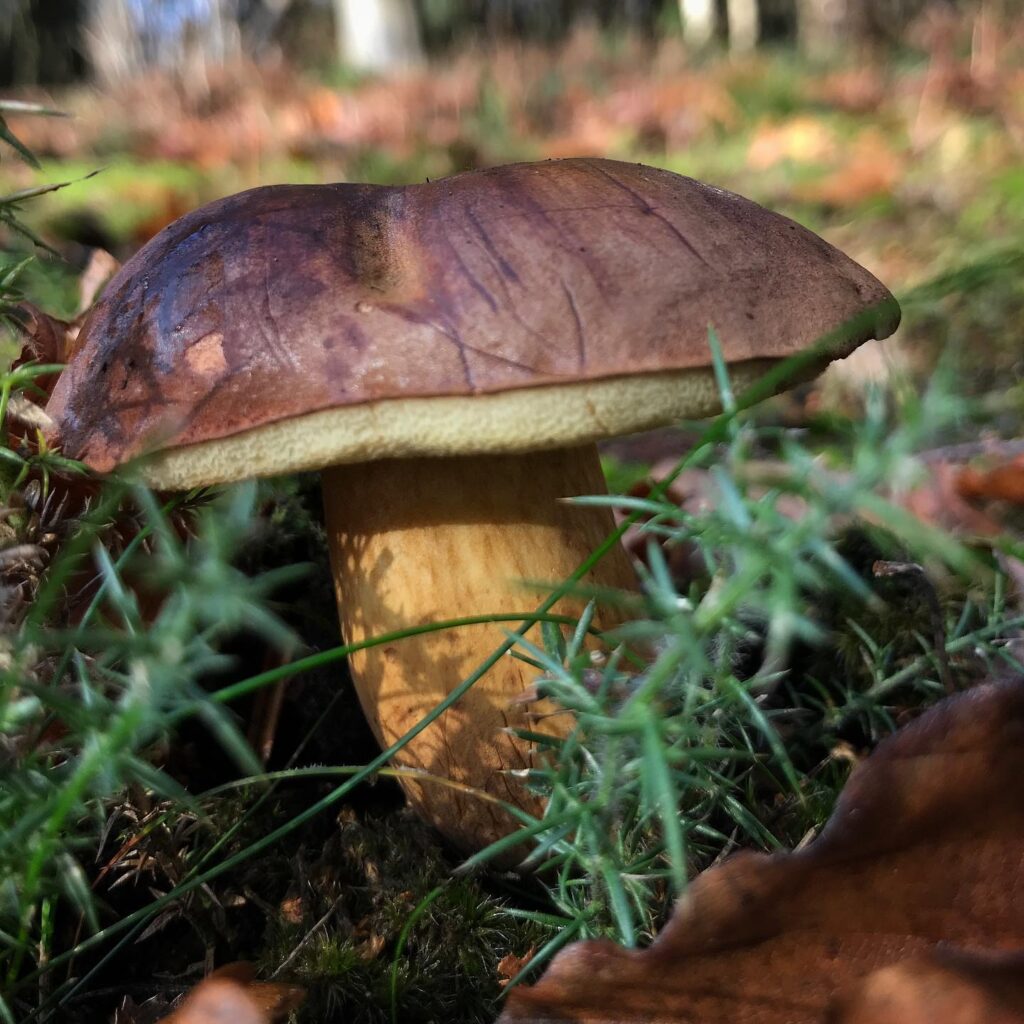
Bay bolete mushrooms have meat that’s sweet tasting with a pleasant fruity and mushroomy smell.
They have many health and medicinal benefits, including increasing brain activity, restoring nerve cells, and reducing the risk of atherosclerosis. They are also natural antibiotics and immune system stabilizers.
In young specimens cap is almost round, then semicircular or convex, while mature ones feature more pillow-shaped or flat caps. The color of the cap can vary greatly – light red-brown, chestnut, chocolate, olive or darker brown, and less often black-brown.
42. Common Ink Cap Mushrooms (Coprinopsis Atramentaria)

Common ink cap mushrooms are edible while their gills are white, but consumption with alcohol is not recommended. If it is consumed with alcohol, it causes nausea. Alcohol can only be drunk 48 hours after eating this mushroom.
It is an egg-shaped mushroom whose cap expands with time. Its edges crack, fray, and finally curl upwards, after which it quickly disintegrates and turns into a black mass that resembles ink. This black mass may drip from the edge of the cap during rapid decomposition.
Meat is delicate and fragile, initially white, later grayish, and finally when it turns into black “ink”.
43. Dryad’s Saddle Mushrooms (Cerioporus Squamosus)
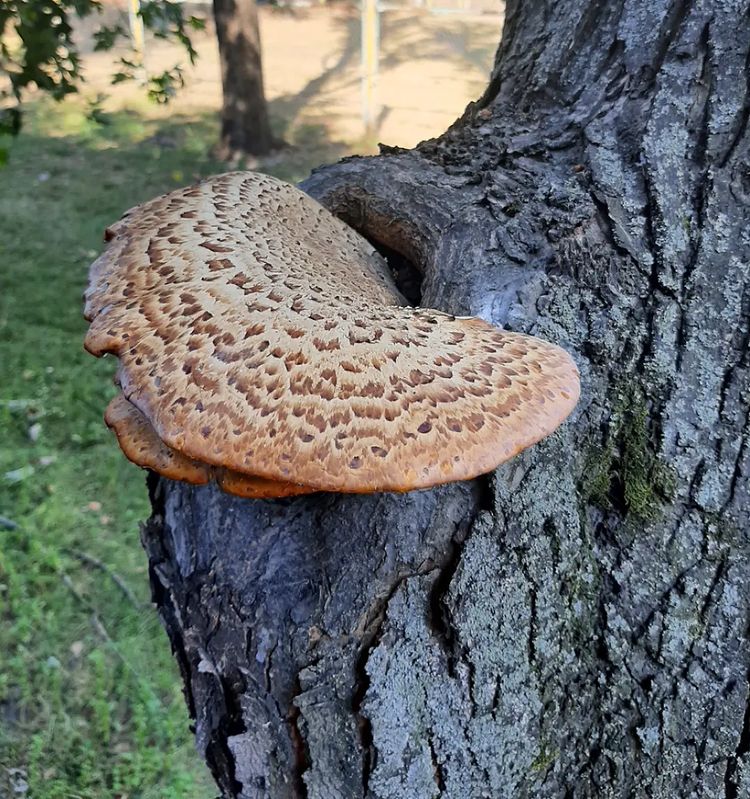
Cerioporus squamosus is a mushroom better known as Dryad’s saddle mushroom in many countries since a creature from Greek mythology rode on a saddle similar to this mushroom. In some regions, it is also called Pheasant’s back mushroom because of the patterns and colors that resemble it.
Their taste is sweet, while the smell resembles the smell of cucumbers and cornmeal. They grow on various coniferous trees and stumps such as walnut, linden, elm, acacia, and horse chestnut.
44. False Morel Mushrooms (Verpa Bohemica)
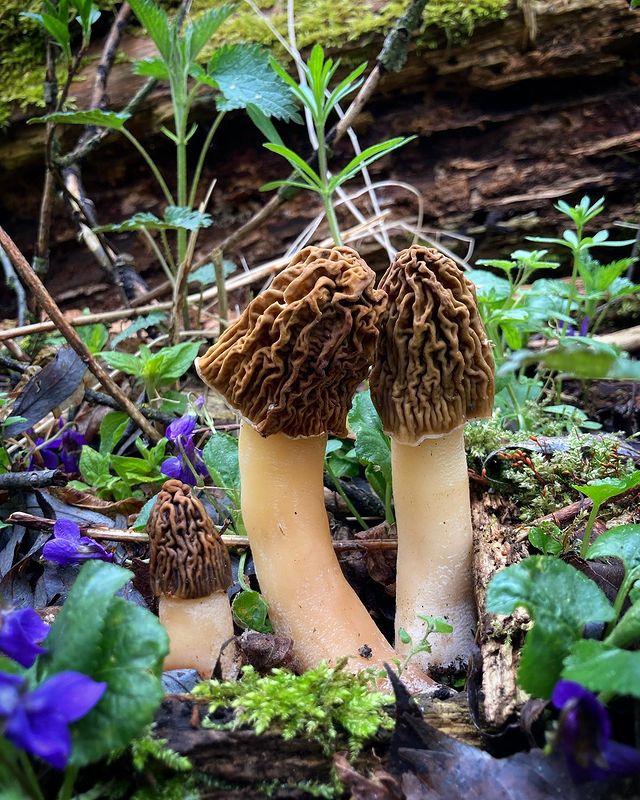
False morel is a small mushroom that grows singly wild in early spring in very wet forests, under willows or poplars, usually along the banks of rivers or streams. It is distributed throughout the northern hemisphere.
The brownish-yellow hat of false morel mushrooms covers the stem like a cap and is conical in shape. There are visible folds on the cap that extend more or less irregularly in the direction of the main axis of the mushroom.
Although they are edible, false morel mushrooms contain small amounts of the toxin gyromitrin and should be boiled before consumption.
Shimeji mushrooms are two to three inches long mushrooms native to East Asia. Since they’re usually found on dead or decaying beech trees, they are also known as beech mushrooms. Their stems are slender and white, while the caps are round and brown.
Beech mushroom has high levels of amino acids, thanks to which it features umami and savory flavor with a crunchy texture.
Frequently Asked Questions
Q: What’s the most expensive mushroom?
European white truffle, whose pound is sold for almost 2,200 US dollars, is the most expensive mushroom in the world.
Q: What’s the most poisonous mushroom?
Thanks to its resemblance to edible mushrooms such as straw or puffball mushrooms, the death cap mushroom (Amanita phalloides) is unfortunately ingested by inexperienced wild mushroom harvesters. According to some reports, it is the most poisonous mushroom in the world, responsible for almost 90% of mushroom-related fatalities.
Editor’s Recommendations
20 Fantastic Red Plants (Including Pictures)







